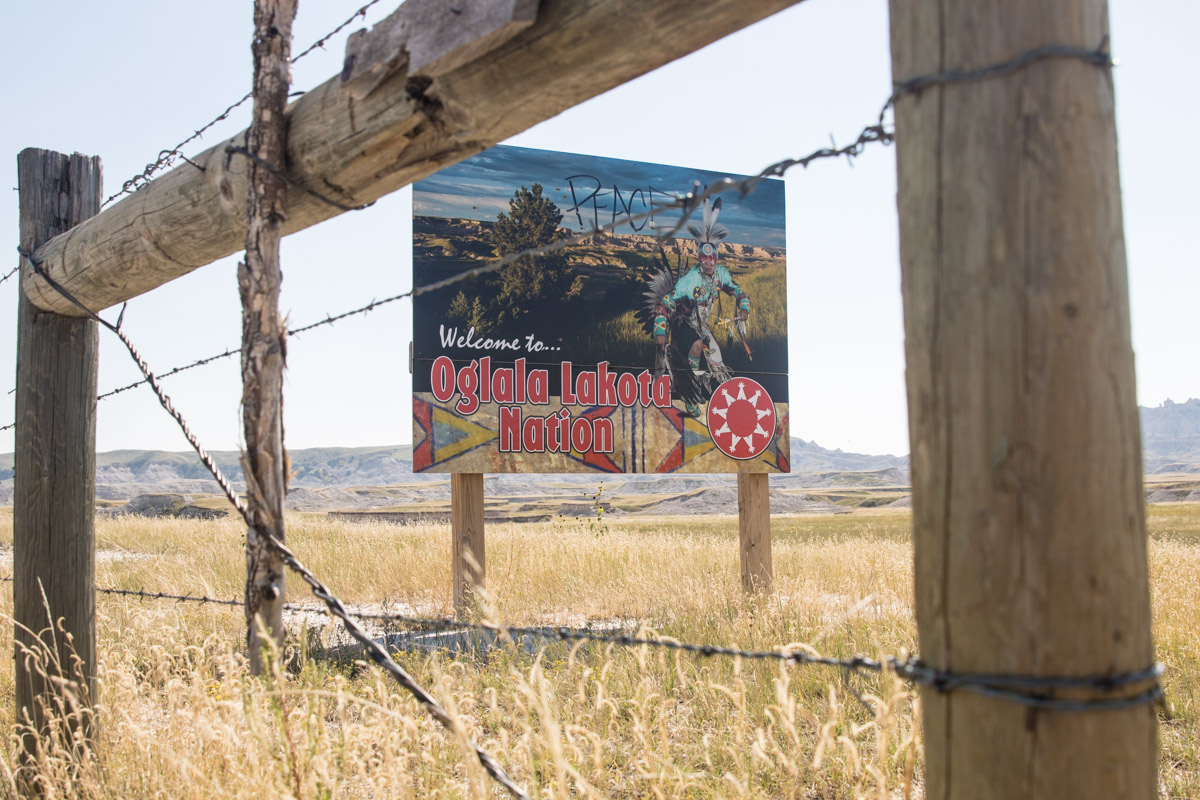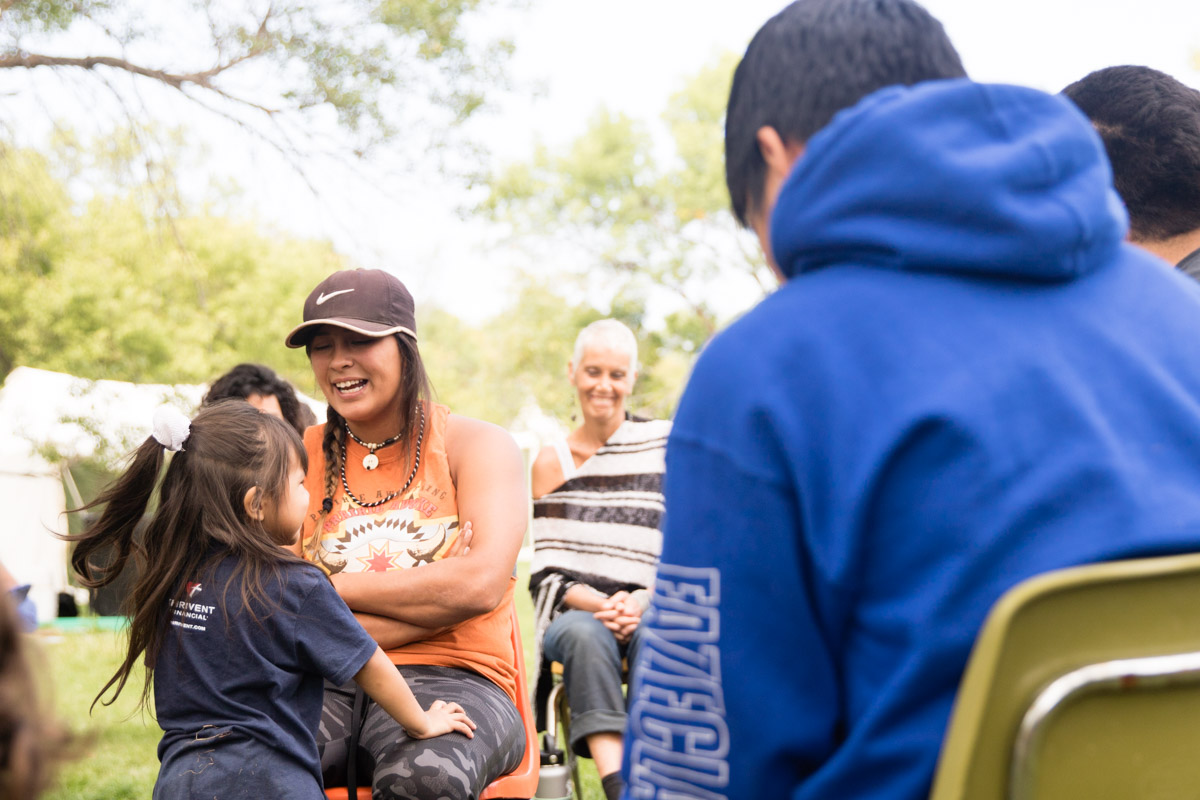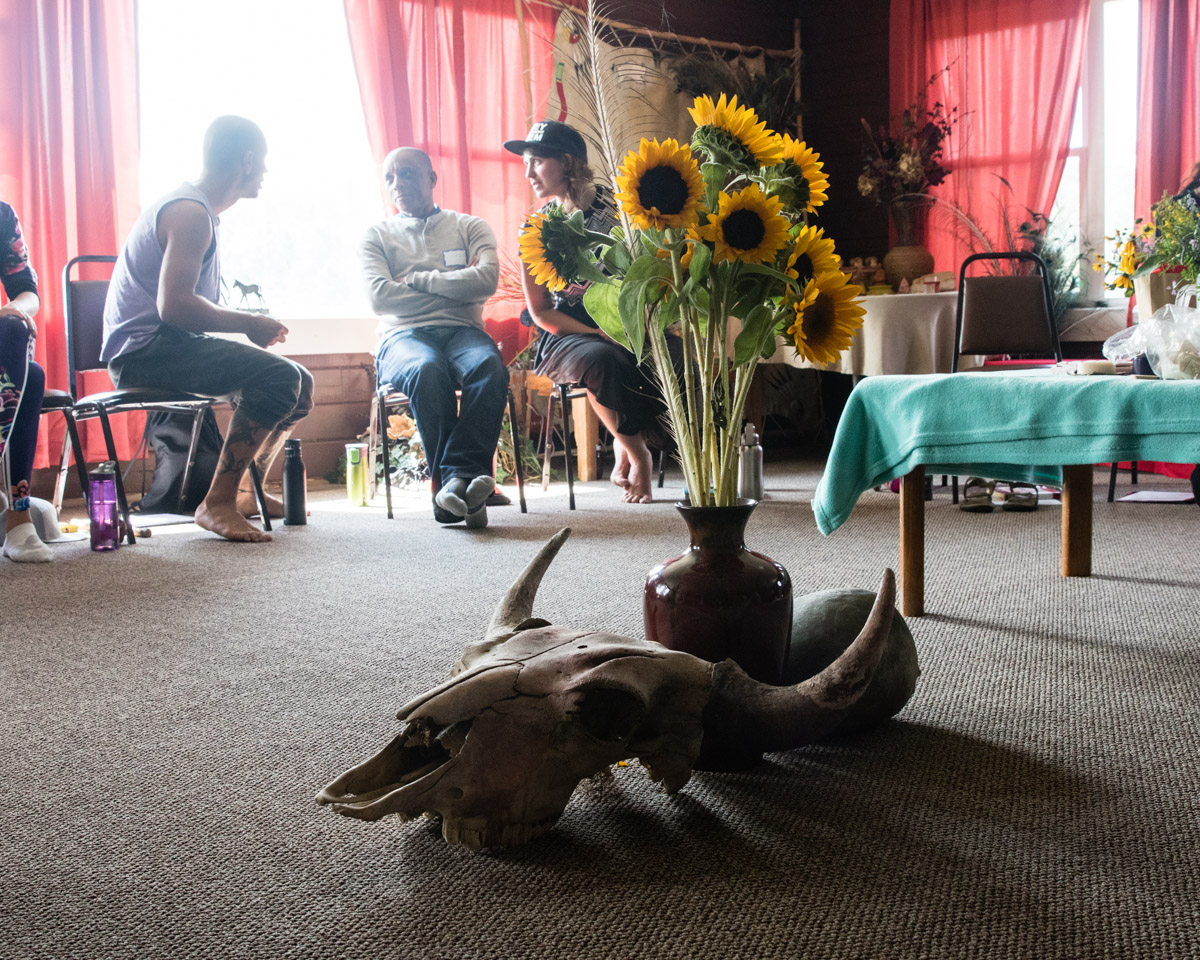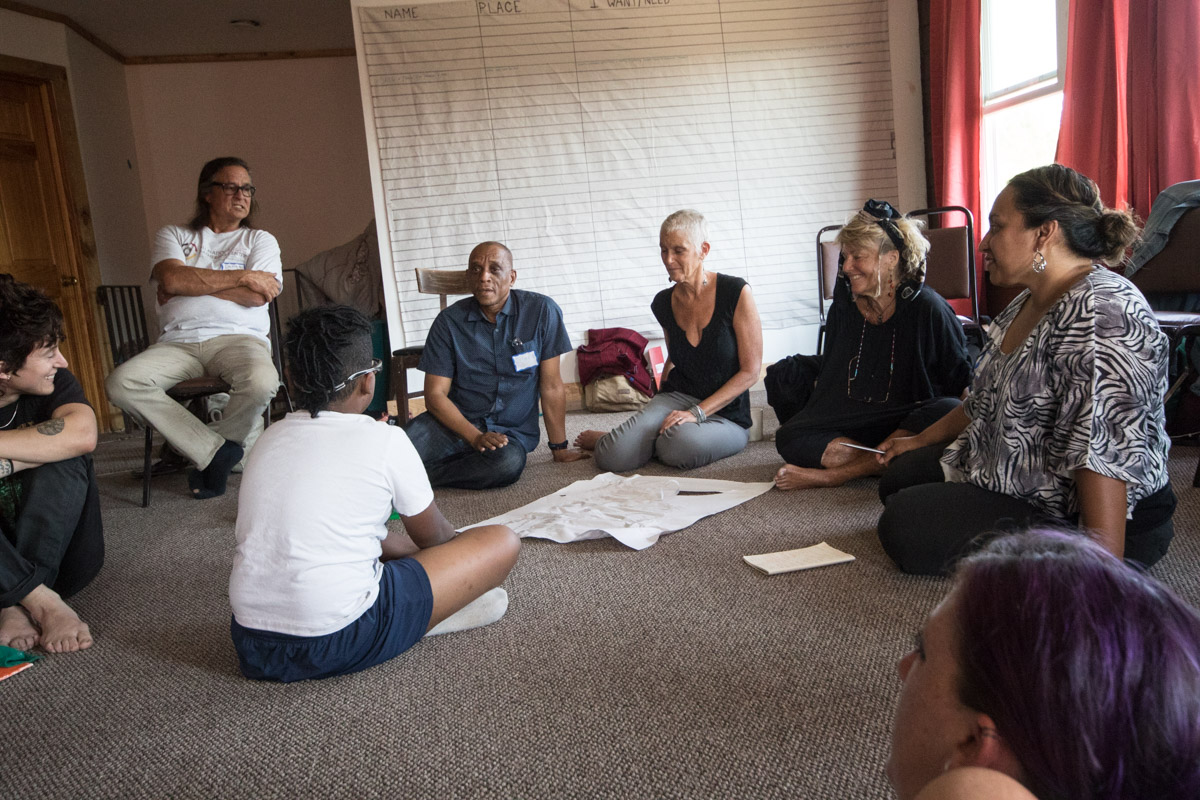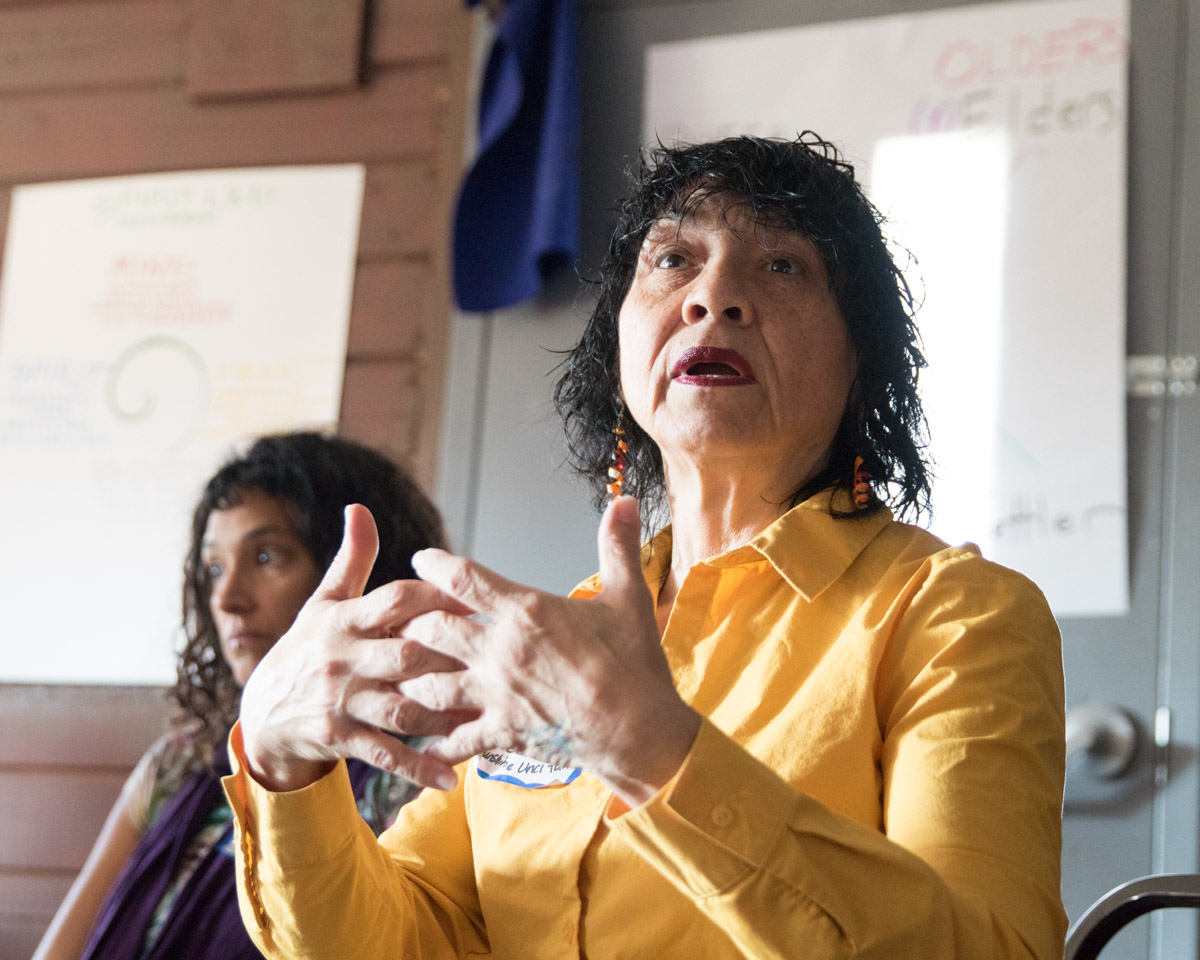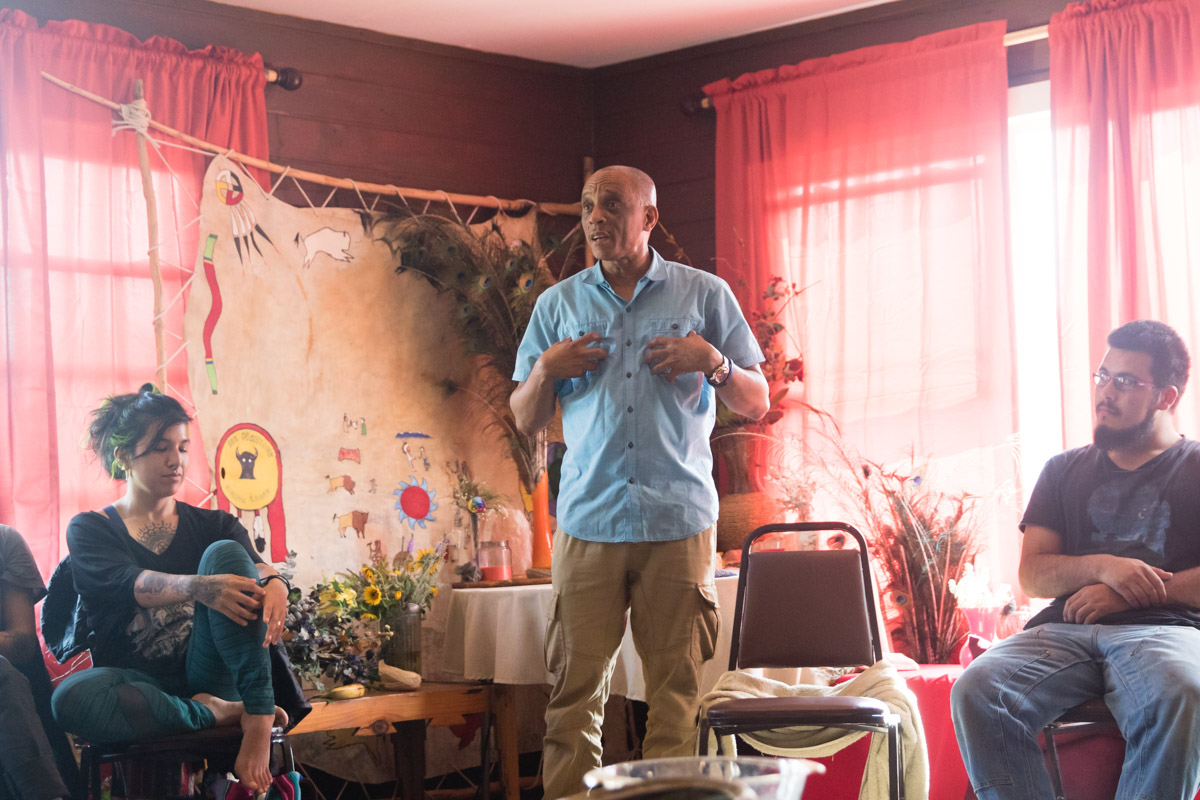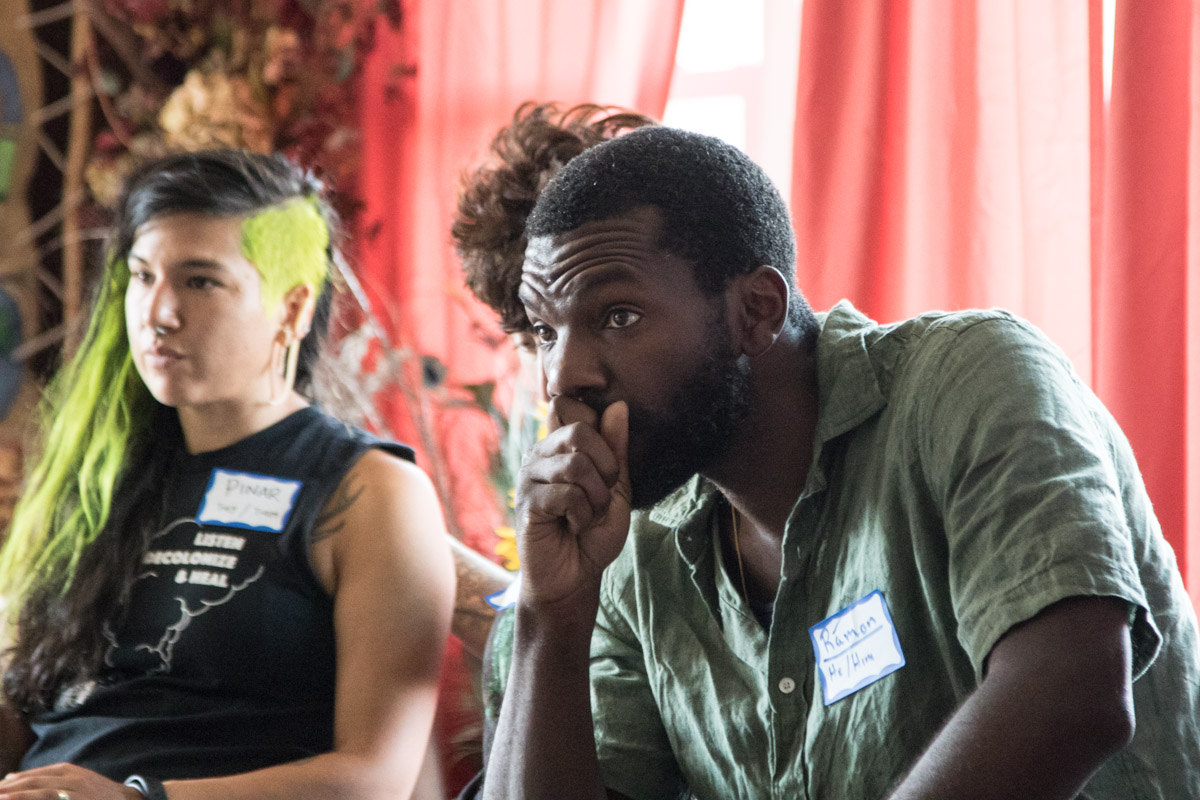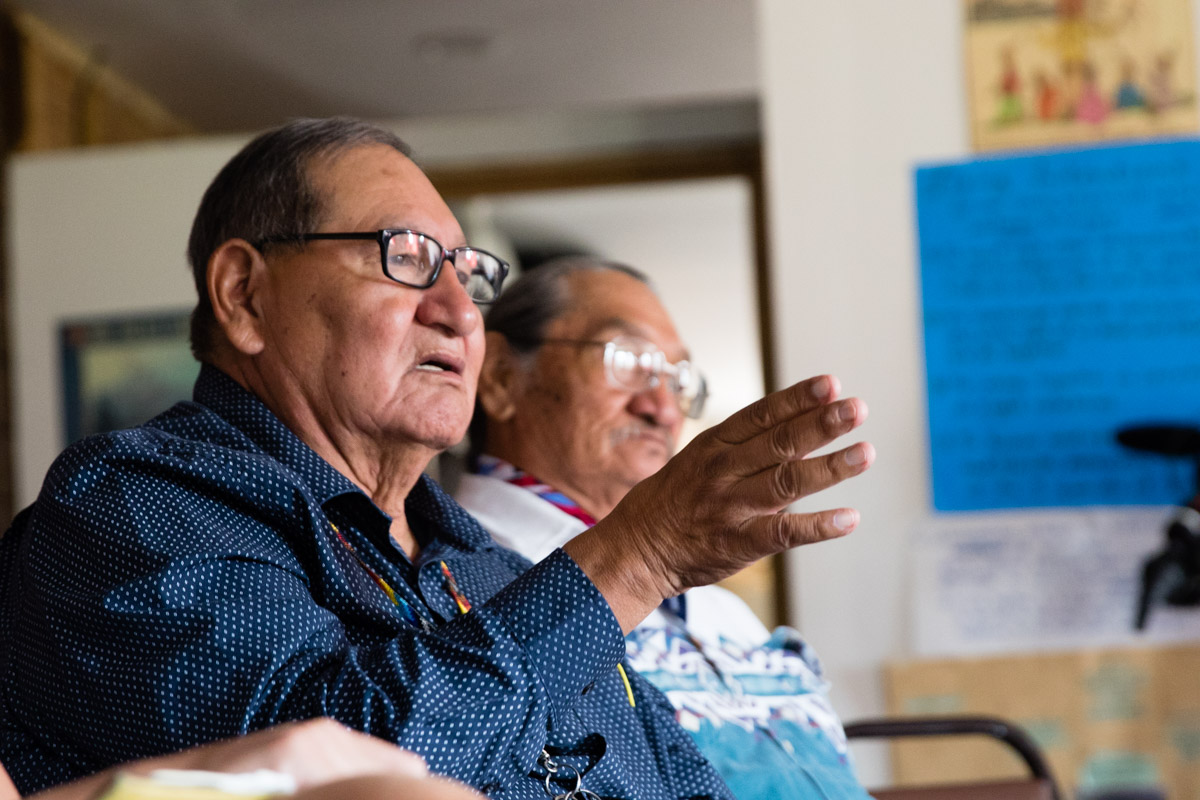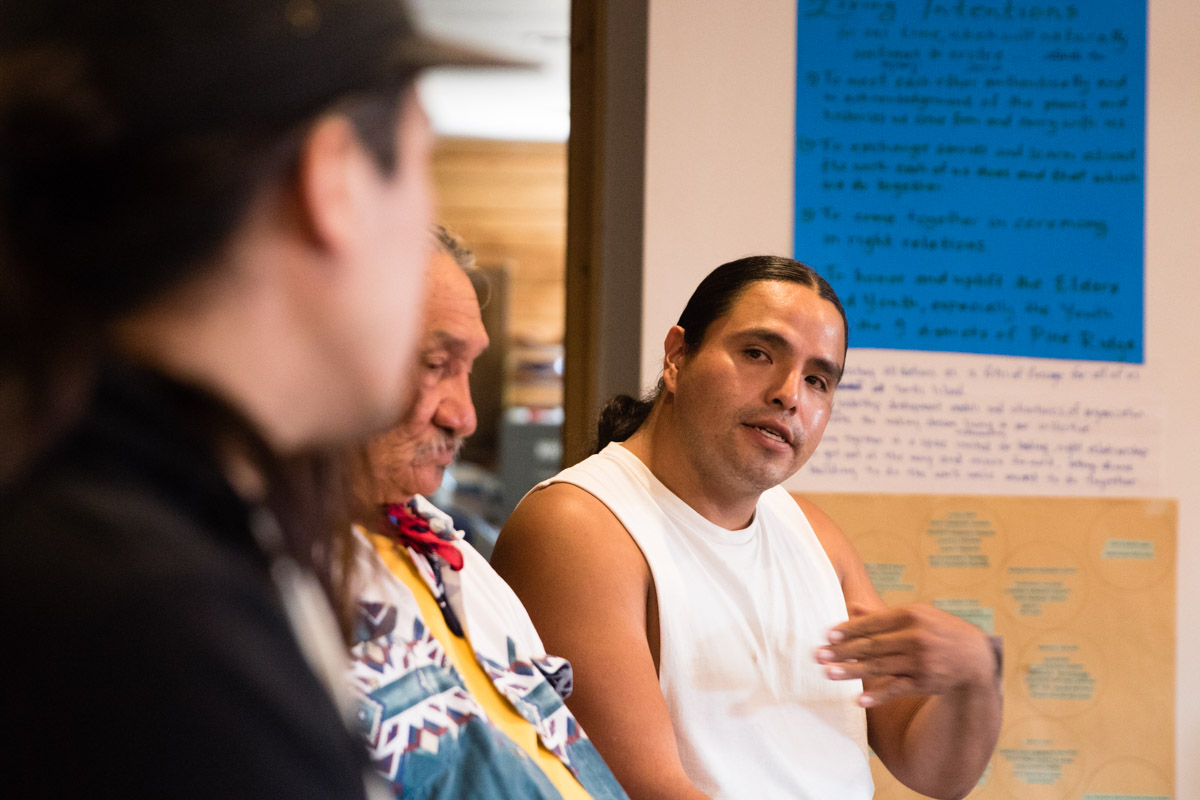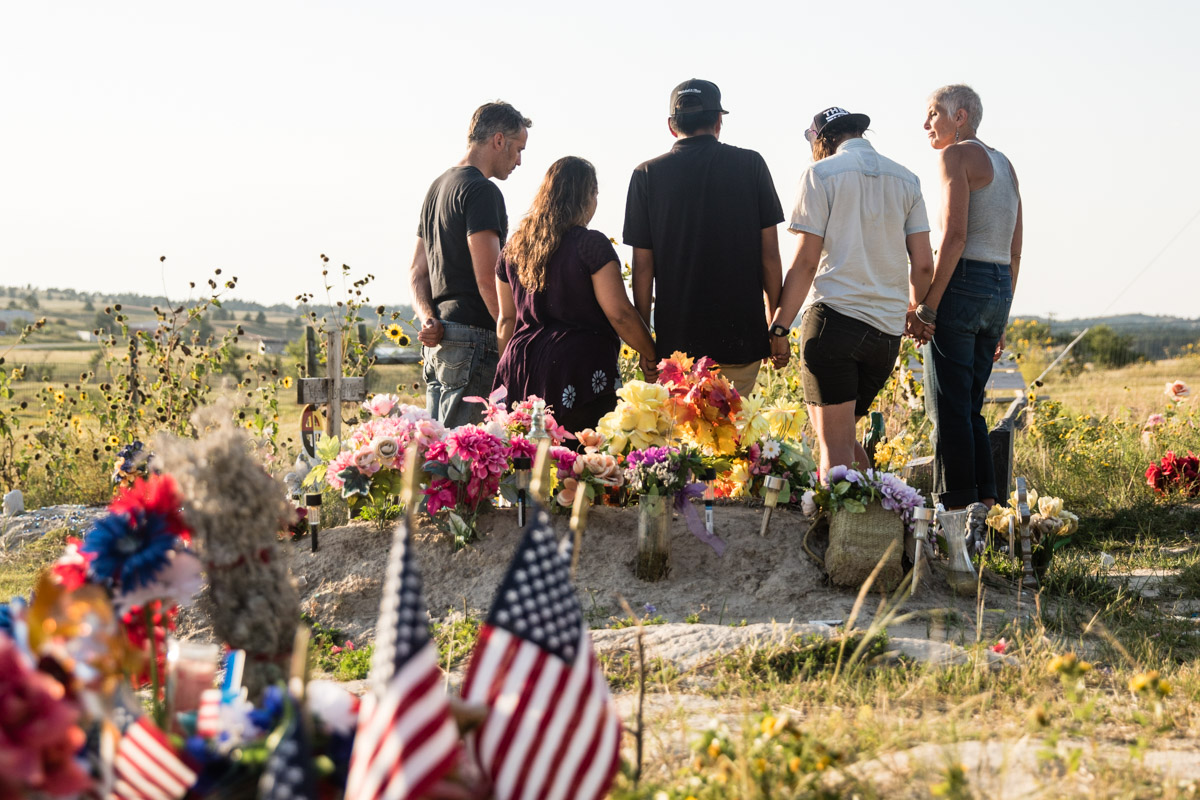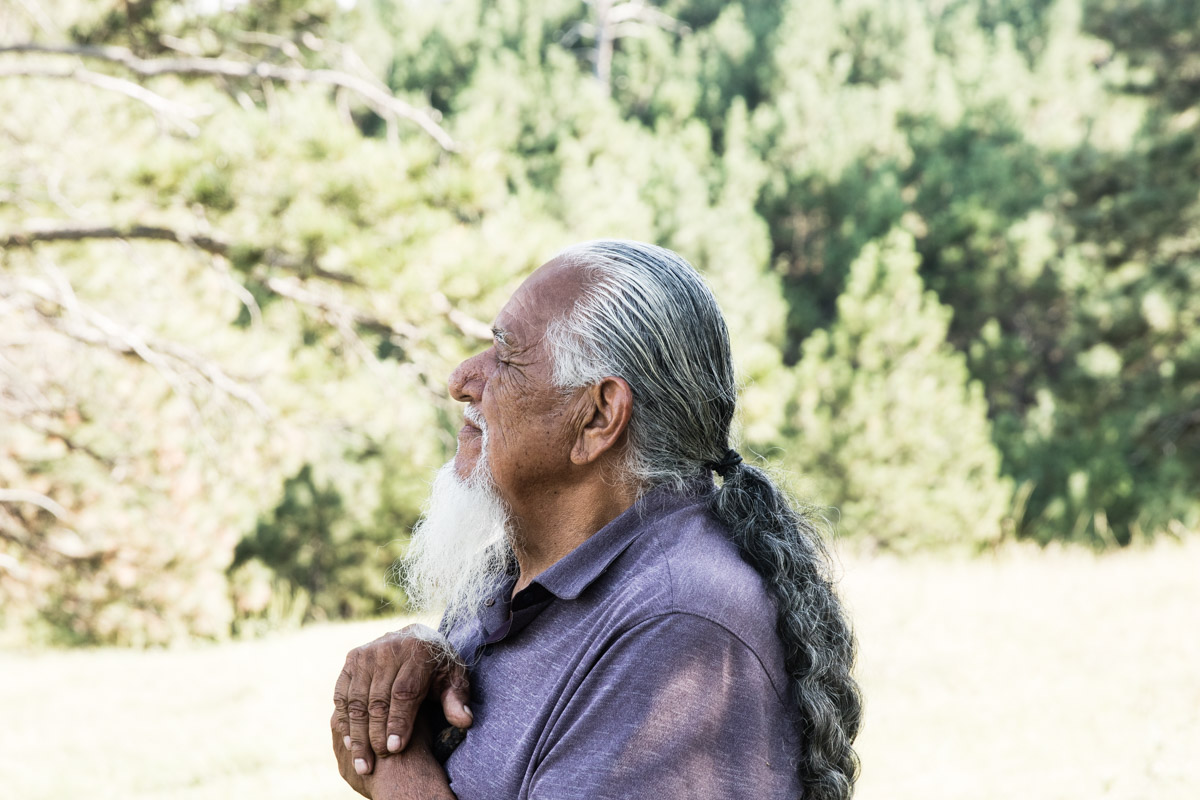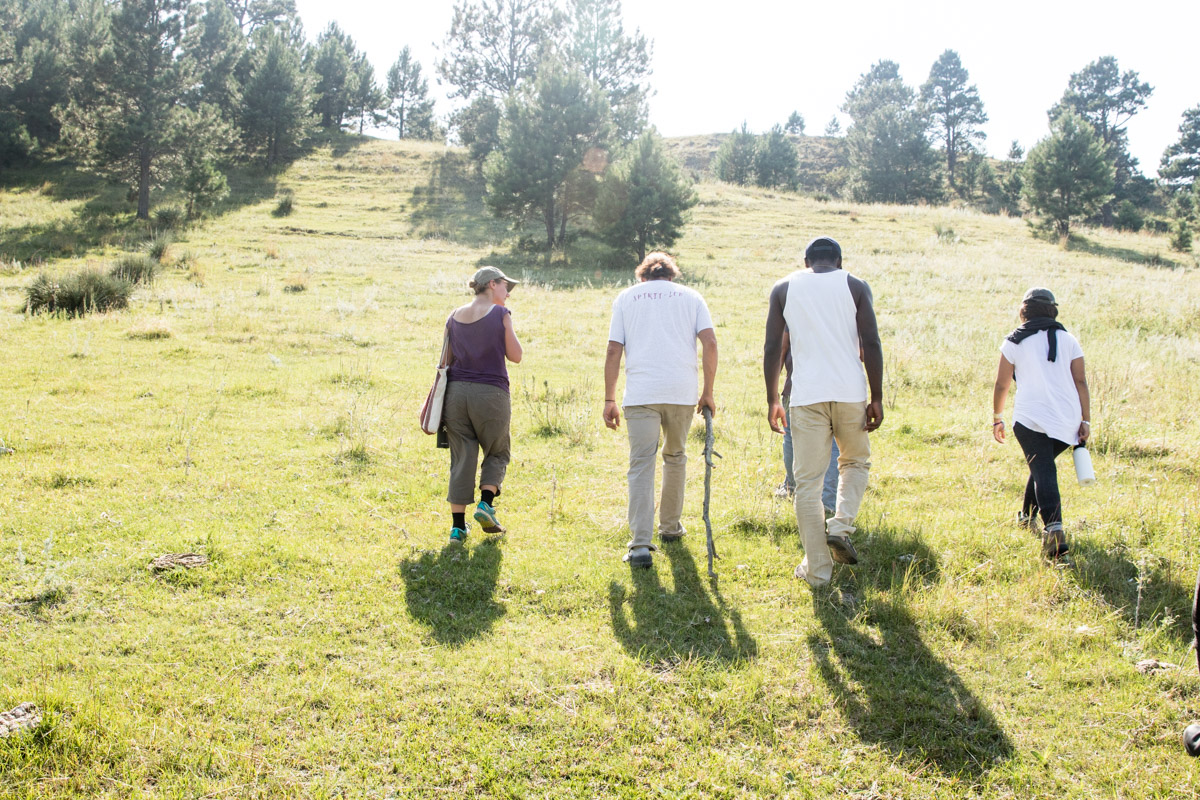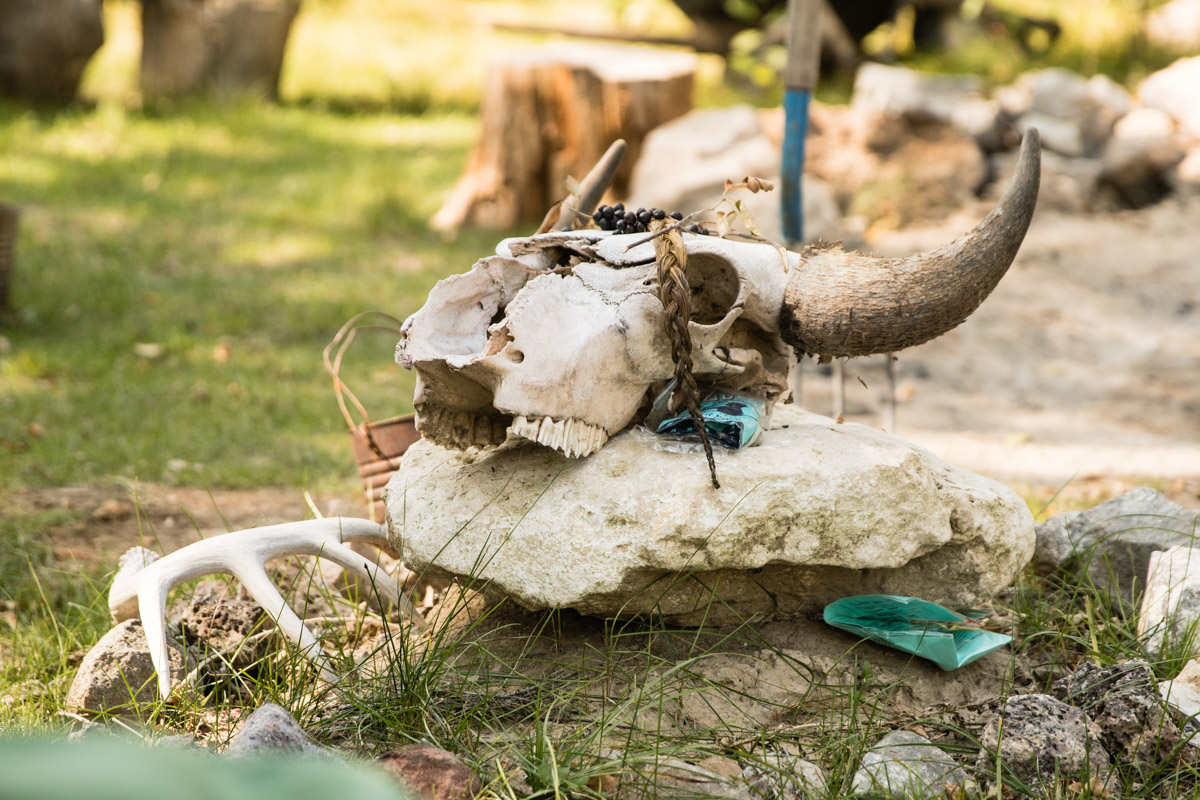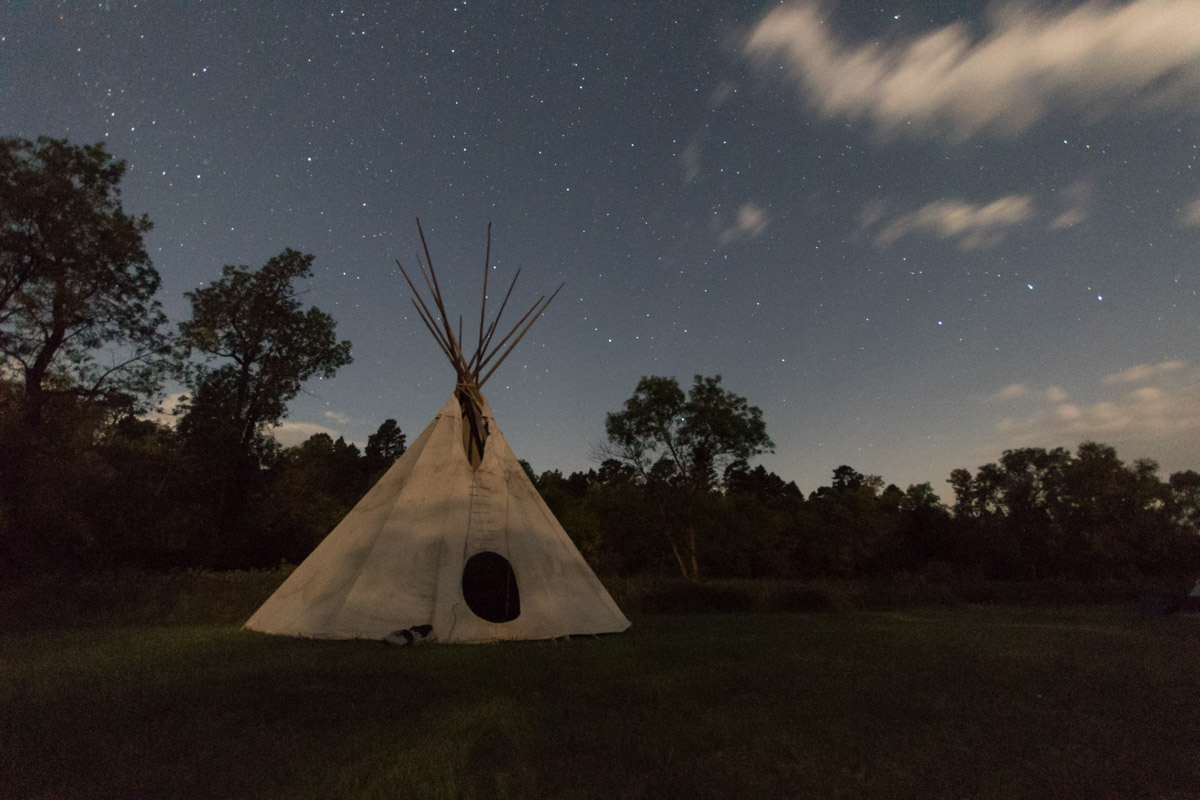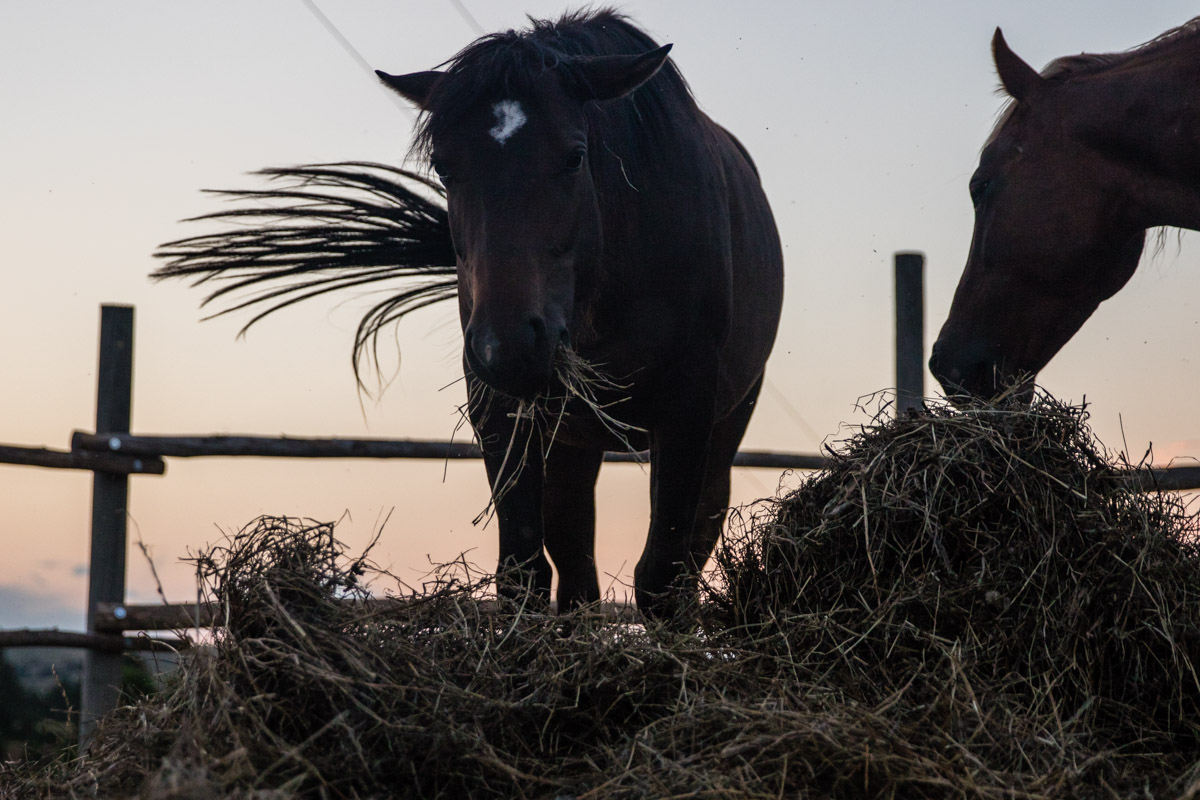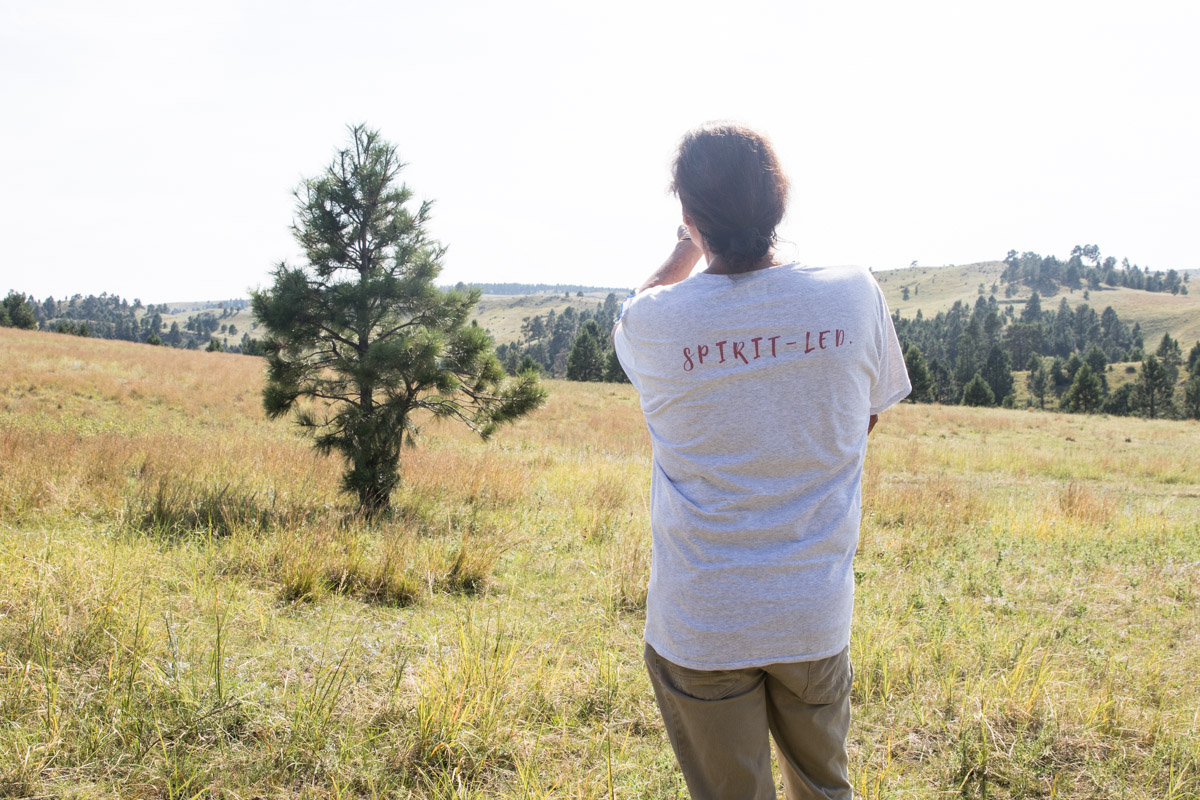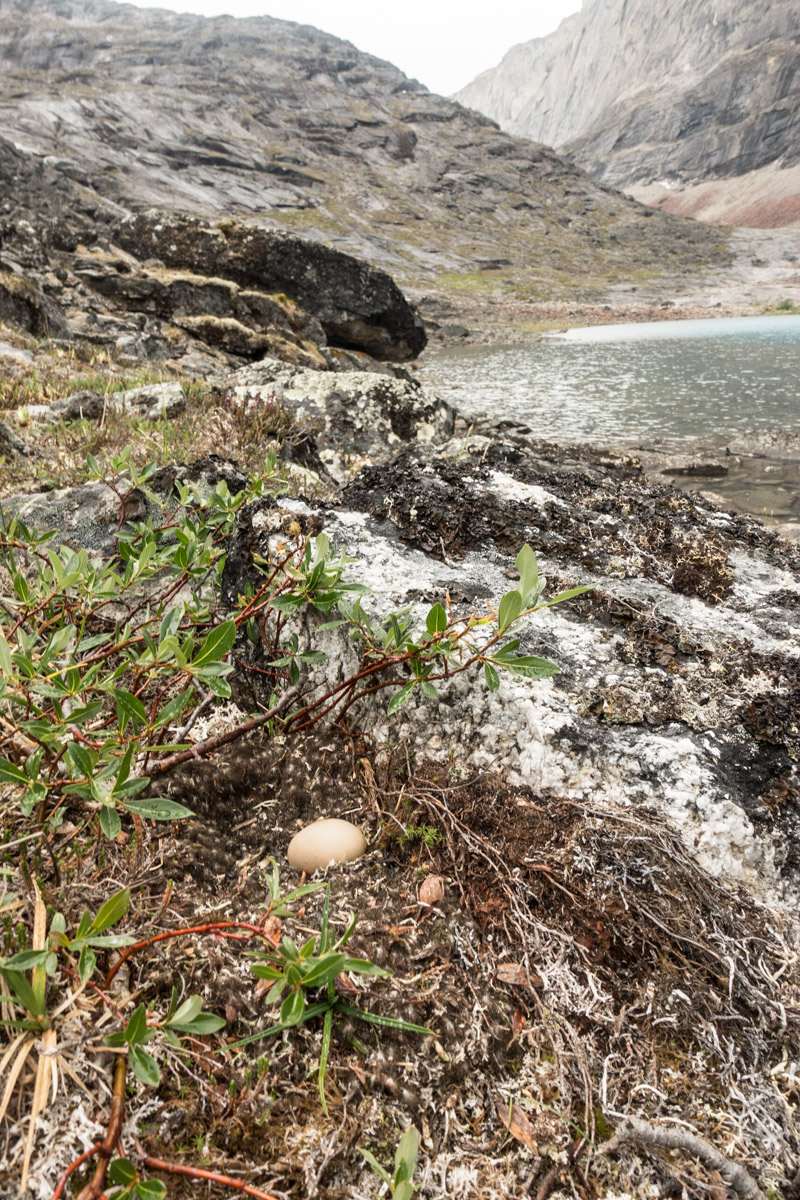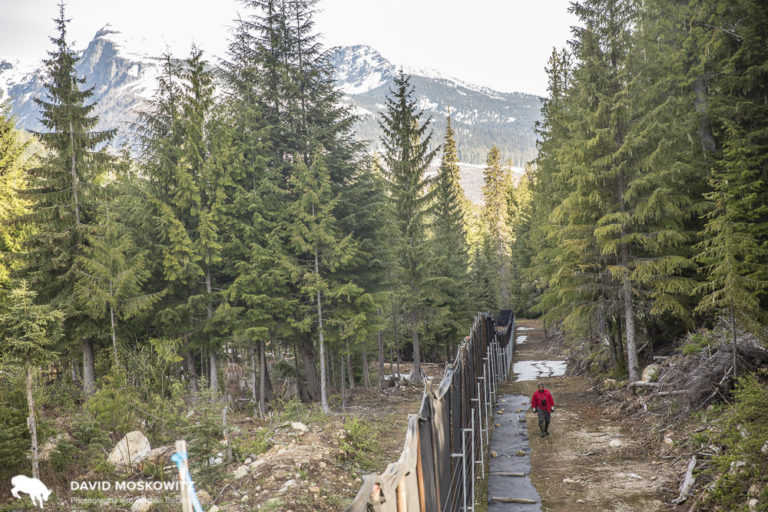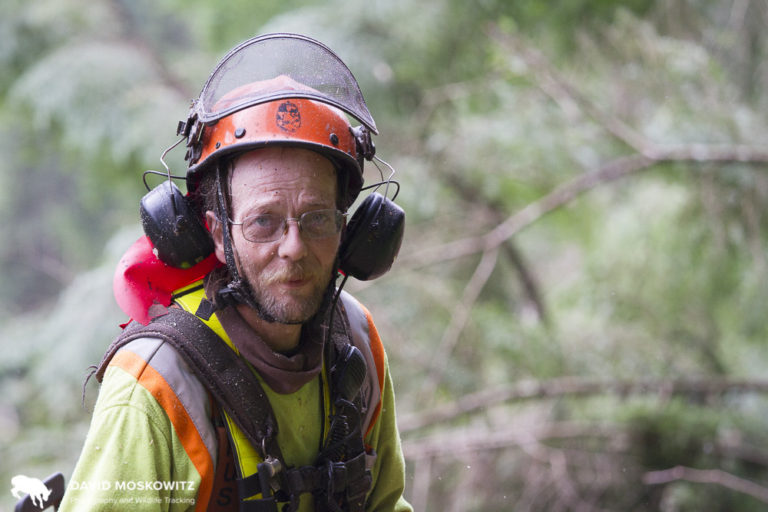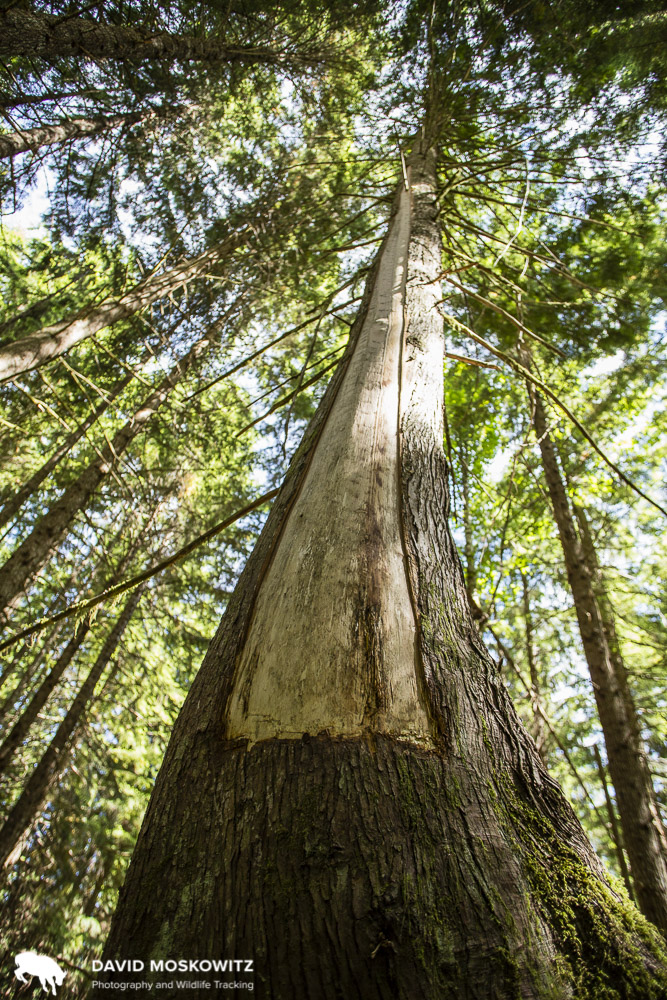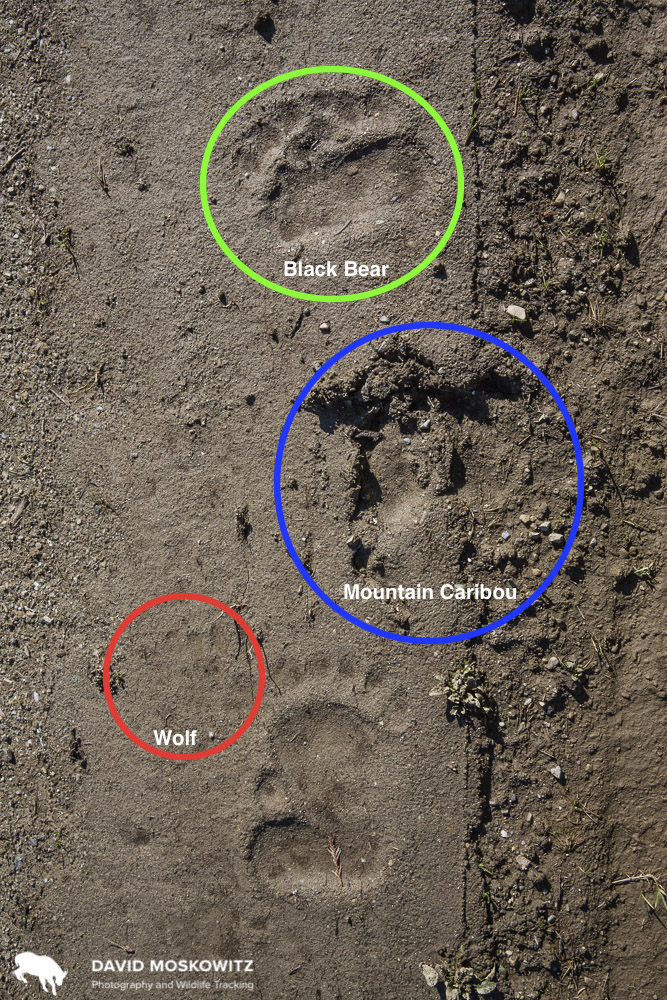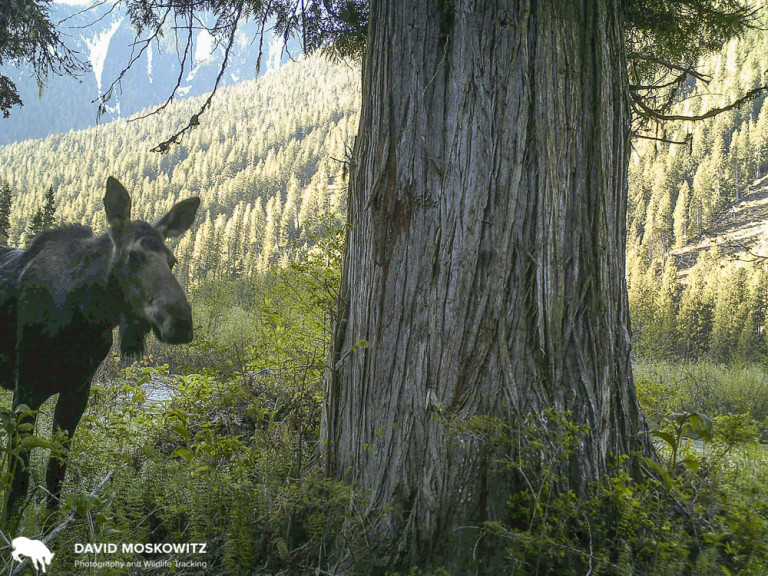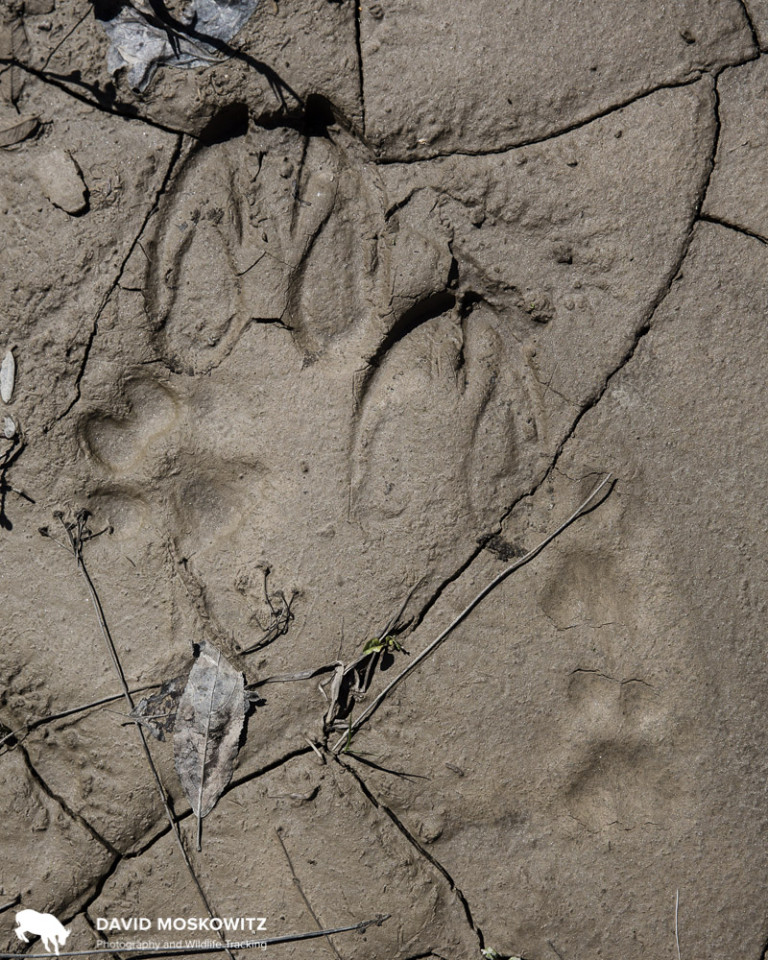Note: On October 25th I had the opportunity to participate in Ampersand Live: An Evening of Storytelling About People and Place, sponsored by Forterra, a land conservancy in western Washington. I had the honor to share the stage with a number of amazing Northwestern artists. With only five minutes to share stories and show images about the Caribou Rainforest, I thought about what I could share that would connect people with this place and the story of its inhabitants….these are my remarks from the evening.
What’s next for caribou in the Southern Selkirks herd?
Arctic Light in the Arrigetch Peaks, Brooks Range, Alaska
In July and August, I was part of a team of four people who made a mountaineering pilgrimage to the most northern mountain range in North America. The central Brooks Range (Gwazhał in Athabaskan) is the traditional territory of the Inupiaq-speaking Kuuvanmiit and Nunamiut people and the Athapaskan-speaking Koyukon. Today, the landscape we visited is in included in Gates of the Arctic National Park.
Forest McBrian, Steph Williams, Drew Lovell and myself spent 3 weeks exploring the Arrigetch Peaks region which comprises two drainages of the Alatna River. My first trip to the Arctic, learning about the beautiful long and low light of summer in the far north was amazing as a photographer. Here are a few shots celebrating the season of light in this expansive and wild mountain range.
A Cross-cultural Gathering on the Pine Ridge Reservation to Explore Youth Rites of Passage
All Nations Gathering Center and Youth Passageways
At the beginning of September, I was honored to participate in a cross-cultural gathering on the Pine Ridge Reservation organized by Youth Passageways and hosted by All Nations Gathering Center. The goals of the gathering were to explore the role of rite of passage experiences in the modern world, and to deepen the relationship between Youth Passageways, whose mission is to help regenerate healthy passages into mature adulthood for today’s youth, and All Nations Gathering Center, whose work focuses on helping create opportunities for healing and growth within the Lakota Nation and connecting with others doing similar work.
I was asked to help photo-document the gathering. It was truly my pleasure to try to capture the spirit of the gathering through images.
Long-tailed duck nest in the Arctic
Granite spires drew me to the Brooks Range, but finding the nest of a Long-tailed duck (Clangula hyemalis) on the banks of a remote lake in a stunning mountain valley was one of the highlights of a 3 week expedition to the most northern mountains in North America.
Like most ducks, Long-tailed ducks construct their nest in a shallow depression on the ground that they line with their own down feathers. The coloration of these feathers is an important part of identifying the nest when the duck is gone. In this case it also helped that the only duck I saw on the entire trip was a pair of long-tails with a single juvenile following them around on the adjacent lake to the nest! Unfortunately it appeared that the remaining egg in the nest had failed to hatch.
Summers are very short in the arctic tundra and already by the end of July when we discovered the nest, fall was just around the corner in this remote part of Alaska. By the second week of August there was snow dusting the high peaks and the race was on for that young bird to amass the energy to begin a fall migration.
Mountaineer Forest McBrian points to the Long-tailed duck nest we discovered on the banks of an alpine tundra lake in the Brooks Range of Alaska.
Like most ducks, Long-tailed ducks build their nests on the ground and line them with their own down feathers.
A single failed egg remained in the Long-tailed duck nest. We observed the pair and a single juvenile in the nearby lake.
A Journey to Bears Ears and Grand Staircase-Escalante
In January of 2018 I took a trip down to the desert southwest to return to landscapes I hadn't visited in a decade and a half. The news about the Trump Administrations attempts to roll back protections for Bears Ears and Grand Staircase-Escalante National Monument has created increased awareness and interest in this part of the United States.
While down there, I was grateful for the chance to meet with Angelo Baca, the Cultural Resources Coordinator for Utah Dine Bikeyah, an indigenous organization that has been at the forefront of efforts to protect many of these lands from continued development and looting. They continue to battle for protections of their ancestral lands. Folks interested in learning more about this region and supporting efforts to protect its natural and cultural heritage can find more information through their website.
This landscape is an international jewel and precious for both the peoples of this landscape and citizens across the United States. Find more images from my trip in my Photo Archive.
Firelight lights up the canyon walls and a cottonwood tree below a winter sky on the Escalante river close to its junction with the Colorado.
Darcy Ottey hopes across the stream running through Coyote Natural Bridge in Coyote Gulch, Grand Staircase-Escalante National Monument.
Petroglyph panal along the San Juan River, west of Bluff Utah.
One of the many spectacular ruins on Cedar Mesa, Utah. Bears Ears National Monument.
Sunrise from Muley Point, Cedar Mesa, Utah. Bears Ears National Monument.
New Website, New Blog, and New Content Coming!
I am very excited to announce that I have completely revamped my website, davidmoskowitz.net. As part of the move I had to transfer my blog content and followers to the new host. For those of you that received a "Test" email yesterday, please excuse me. It was meant for me only.
I am just returning from an amazing month up in the Arctic in Alaska's Brooks Range and am excited to share some images and stories from the adventure on my blog and website in the coming weeks!
Take a look around the new website, there are some new images up in my photography galleries and a much better searchable photo archive which is barebones at the moment but will be growing rapidly in the months to come!
Thanks much!
Drew Lovell climbing on the south ridge of Shot Tower in the Arrigetch Peaks region of the Brooks Range, Alaska.
Mist clings to the Albatross and obscures Xanadu Peak and Melting Tower behind it at the headwaters of Arrigetch Creek, Brooks Range Alaska.
Southern Selkirks Herd Declines But Efforts to Save Caribou and The Rainforest Continue
"Functional Extinction" But Most Definitely NOT Game Over.
Many of you may have caught wind of the recent news about the continued decline of the Southern Selkirks herd, the last transboundary herd of Mountain Caribou. Their story was featured in articles in the New York Times in the United States and The National Post in Canada, both featuring an image from this project of one of the last animals from this herd.
While these two stories had catchy headlines, they generally missed that, for the tribes and conservation groups working on this topic, it is most certainly not "game over". See this article in the Northwest Sportsman Magazine which includes an interview with Kalispell Tribal biologist Bart George, this press release put out by project partner Yellowstone to Yukon Conservation Initiative, and this blogpost from Conservation Northwest.
This news marks the start of a pivotal moment for the conservation of the Caribou Rainforest. Indigenous peoples legal rights to access these traditional animals are not just rolling over with this news. Now is a moment to continue to stay engaged in this topic in support of their legal rights and our society's moral obligations.
With the potential demise of this and a number of other herds, habitat protected for them could go back on the chopping block. This ecosystem, for which the caribou is emblematic, will need protection with or without caribou. Along with our continued support of caribou specific conservation efforts, we must also seize this moment to grow our message to focus consistently on the Ecosystem rather then just the species.
To that end, I am excited that the photography book which is the culmination of much of the work of this project will be out this fall. Our film, Last Stand: The Vanishing Caribou Rainforest, is an expose of the destruction ongoing in this ecosystem. The Caribou Rainforest: From Heartbreak to Hope, published by Braided River, is our attempt to celebrate and highlight this amazing and overlooked ecosystem, one of the most unique forest ecosystems on planet Earth. With or without caribou, The Caribou Rainforest is a place worth protecting. For all the other creatures that call this place home, for all the people whose lives and cultures are tied to it, and for everyone who depends on a stable climate and cares about what future generations will be inheriting from us.
This fall, along with the release of the book and a renewed schedule of slideshows and film screenings we will be releasing the film for online viewing in order to get these two messages out as far and wide as possible.
We continue to be grateful for all the support we have received up to this point and continue to look for funds and opportunities to get our material and message out as far and wide as possible. Braided River is currently fundraising to support outreach activities aligned with the release of the book.
More work ahead. We carry one.
Cascades Wolverine Project
I am excited to be starting a new collaboration this winter right in my own backyard here in the North Cascades. Cascades Wolverine Project is a grassroots effort to boost winter wolverine monitoring in the North Cascades, capture engaging images of this elusive mountain carnivore, and leverage the skills of winter backcountry recreationists as wildlife observers and alpine stewards. Learn more about the project on our website cascadeswolverineproject.org, or follow along on instagram at @cascades_gulogulo We currently have 6 camera trap installations set up on the eastside of the North Cascades for the winter and have completed our first camera check of the season. No wolverines yet but we did get some fun photos of other North Cascades critters! Along with running camera monitoring stations we will be working on developing more opportunities for backcountry skiers to get more involved in wolverine conservation in the North Cascades!
Project leader Steph Williams having absolutely NO FUN during our field work. Follow Steph on instagram at @stephwilliams9010.
Southern Selkirks Caribou Maternity Penning In the Works
One of the last mountain caribou left in the Southern Selkirks herd, photographed here in the Darkwoods Conservation Area owned by the Nature Conservancy of Canada. These caribou have been amazingly hard to track down.
By Kim Shelton and David Moskowitz
On our first in-person meeting, Norm Merz, wildlife biologist for the Kootenai Tribe of Idaho, met us at his office but soaked up to his knees from having already spent the better part of the morning walking through wet meadows for work. Previously, when I spoke to Norm over the phone, I could hear his smile as he expressed how much he cared about his work; “I love it”. But not all of the work of this biologist involves morning meadow romps. Saving a species on the brink of extinction involves a great deal of grueling work out of the field; planning, coordinating people, and securing funding.
The story of the South Selkirk herd of mountain caribou was the initial inspiration for the start of the Mountain Caribou Initiative. This is the only herd left that travels back and forth over the Canada-USA border and, as such, keep mountain caribou as clearly an American issue (besides the fact that USA corporations and consumers are responsible for much of the ongoing resource extraction on the Canadian side of the border affecting caribou). As of this April, there are just 11 caribou in the South Selkirk herd. Without emergency measures to reduce the rate at which adult animals are dying and increase calf survival rates, we are at a high risk of losing this herd entirely and permanently. Lead in large part by the initiative of the indigenous peoples of this region, planning for a maternity pen for this herd is underway for this coming spring.
Constructing a maternal pen is a lot of work, it costs a lot of money, and there’s no promise that it will actually succeed. No one benefits monetarily from trying to stop the extinction of this herd, but the people fighting for these animals are in it for another reason. “It’s a matter of the heart,” Merz admits. For the people of the Kootenai tribe and their neighbors, the Kalispel in northeastern Washington, its also an issue of cultural identity and survival.
Wildlife monitor Lenny Edwards, member of the Splatsin First Nation, walking the outside perimeter of the maternity pen north of Revelstoke BC.
Three pregnant mountain caribou safe inside the Revelstoke maternity pen.
Look closely to see the mountain caribou feeding inside the maternity pen in Revelstoke BC. The proposed pen in the Southern Selkirks would appear similarly and create a predator free environment for cows to give birth to young.
There are a lot of organizations involved in the project including tribes, First Nations, Provincial, State, Federal, and local governments, all of which have representatives on the Selkirk Caribou International Technical Working Group (SCITWG). This group is tasked with updating the 1994 recovery plan to stop the extirpation of the Southern Selkirks herd. One of the first things agreed upon by this group was that action needed to be taken even while a recovery plan was still being updated. Without immediate action, this herd will almost certainly go extinct before the planning process can be completed. “We’re to the point where we’ve gotta try everything we can,” says Merz.
An effort was made to initiate the maternal pen this spring but weather and bureaucratic red tape stymied the effort for 2017. However, things are looking promising for 2018. The pen is currently being constructed in preparation for capture work in March or April of 2018. However the budget to run the pen is just over $230,000 USD with most of these funds yet to be secured. Without these funds, the project won’t get off the ground.
Based on the most recent survey, there are currently only 6 cows in this tiny and shrinking herd to be captured and transported via helicopter to the 20 acre maternal pen on the Nature Conservancy of Canada property east of Ymir, British Columbia. They will be held for 3-4 months while they give birth, and will be released around mid-July when the calves are about a 6-8 weeks old. At the pen, a wall made of 15ft high geotextile fabric and electric fencing serve as both a visual barrier to protect the wildness of the caribou and as a deterrent to predators.
Volunteers with the Selkirks Conservation Alliance are hard at work collecting arboreal lichens to feed the caribou in the maternity pen next spring, like these caribou in the Kline-sa pen further north.
Merz explains that they would love to augment the South Selkirk herd with animals from other herds, to help with numbers and also with genetic diversity. However, with all of the southern mountain caribou herds populations in poor shape, additional caribou don’t appear to be available for augmentation at this point , even if those animals were exchanged back once the herd is bigger. At the very least the SCITWG is hoping that the pen will stabilize the population as appears to be the case with the North Columbia herd where maternity penning has been ongoing, if not succeed in increasing calf numbers as has happened with the Klinse-za herd in the South Peace region of BC which also had a maternity penning project.
Interested in donating to this endeavor? Send donations to Kootenai Tribe of Idaho – Charitable Conservation Fund, PO Box 1269, Bonners Ferry, ID 83805. There are no administration fees and donations may be tax deductible. Contact Norm Merz at merz@kootenai.org or 208-267-3620
See a video of some of the last caribou in the Southern Selkirks caribou herd we captured in the Nature Conservancy’s Darkwoods preserve during the summer of 2016:
https://vimeo.com/176074778
Learn about the Klinse-za maternity pen and watch a short video we produced about it: http://davidmoskowitz.net/2016/04/klinse-za-caribou-maternal-penning-project/
https://vimeo.com/161226373
Visit our website for Last Stand: The Vanishing Caribou Rainforest to watch the trailer and learn more about our efforts to support conservation efforts to project this unique ecosystem.
Field Notes: Winter in the Monashee Mountains
Photos and text by David Moskowitz. Expedition partners: Steph Williams and Forest McBrian.
A Fruitless Search For Caribou
We go to the mountains searching for answers. We go to the forests looking for clues. We watch the clouds roll across the peaks, keen to see what the universe will deliver on the wind. We scan the snow for the tracks of elusive creatures of the wild wonder about their lives when we find them and their absence when we don’t.
Back home, developing images of stark landscapes Carved by forces beyond our comprehension Turned to black and white and every shade of grey in between. Their is a haunting beauty in precarious landscapes Unsettled times What’s missing from our maps? What’s hidden in the clouds? When will these mountains come tumbling down?
Mountain Caribou Initiative: Camera Trapping for Carnivores
Text and photos by David Moskowitz Caribou are not the only animal tough to track down in the Caribou Rainforest ecosystem. As part of our efforts to tell the story of all of the creatures that call these mountains home, I have been setting camera traps this winter in collaboration with Swan Valley Connections in northwestern Montana and the Yellowstone to Yukon Conservation Initiative in the panhandle of Idaho this winter to capture images of some of the rare and elusive carnivores that depend on this wild landscape. Here are a few images from this winter field work and some out-takes of images from the camera traps.
Anything unusual about this snowmobile packing job? Researchers in Idaho and Montana are using beaver carcasses or deer legs as attractants to lure rare carnivores like Canada lynx and wolverines to bait stations set up with hair snagging devises to collect genetic samples from animals without ever having to see or handle the animals. I’ve been hitching a ride out into the field with researchers and setting up my camera traps adjacent to their bait stations.
Cody Dems (left) and Adam Lieberg set a bait station in the Mission Mountains of Montana.
Cody inspecting the fresh trail of a wolverine in Montana.
A Canada lynx enjoys some sunshine in a photo from one of my camera traps in Montana. Got many photos of this fellow in this beautiful subalpine forest. Its been many decades since caribou roamed these forests but lynx continue to call these mountains home.
A photo bombing snowshoe hare set up in front of another camera in the Selkirk Mountains in Idaho.
An American marten takes in a snowy night at the same camera trap as the snowshoe hare above.
Learn more about the Mountain Caribou Initiative here. Stay tuned for the trailer for our forthcoming film which should be out this spring. For updates on the film and other material forthcoming from the project, sign up for quarterly emails on the About page of my website.
Why is Representative Newhouse defending the coal industry and silent on climate change?
Why is Representative Newhouse defending the coal industry and silent on climate change?
David Moskowitz, February 3, 2017, Winthrop Washington
Last week our US Representative, Dan Newhouse took the floor in Congress and delivered a lengthy commentary on the need to roll back regulations put in place by the Obama administration to protect streams from coal mining waste. He laid out his case for why these regulations are a threat specifically to America’s coal industry. The merits, or lack there of, of his case can be debated—the regulations he discussed are complicated as are how to evaluate them. The coal industry is not a substantive presence in our district, a fact that makes this subject even more challenging for us, his constituents, to fully grasp. Which presents the truly questionable nature of his remarks. Why is our Representative spending his time (our time) defending an industry that is both absent from our district and demonstrably poses significant threats to the vibrant economy we do have here?
Representative Newhouse has made his position that he recognizes that climate change is real and has even proactively engaged in working to support efforts on the federal level to deal with some of the consequences of climate change on our region. Those of us truly interested in a bright future for our region should be grateful our Representative isn’t living in the world of “alternative facts” which drive many in the Republican party to deny the reality of this very real problem we are facing. That being said, in past statements, Newhouse has also suggested that it doesn’t appear much can be done to reverse climate change and even questioned whether climate change was caused by humans at all. This is either a case of a politician attempting to take both sides of an issue publically, or an indication that perhaps our Representative does occasionally indulge in the world of “alternative facts” which are eroding our social dialogue and political process in this nation.
The fact of the matter is, coal and fossil fuel consumption around the globe is driving climate change and the impacts do not look good for our district. Increasing wildlife risk, increasing shortages of agricultural water are real issues we are facing now which are predicted to get worse. Perhaps most ironically, the bountiful hydropower which provides reliable, affordable, and carbon neutral energy for our region could be threatened by the variable weather conditions and decreased snowpack our region will face. In this sense, our Representative is actually spending our time working against our best interests.
Why doesn’t Newhouse let members of Congress from coal country advocate for the needs of their constituents? We need our Representative to represent ours. Our regions is both poised to support and benefit from our nation continuing a transition away from a fossil fuel economy. Alternately, we have much to loose from the impacts of climate change if we do not address it in a real and meaningful way. It's a shame Dan Newhouse is apparently more concerned about the vitality of the American coal industry then the citizens of his Congressional District.
Open Letter to Patty Murray, United States Senator
Senator Patty Murray, 154 Russell Senate Office Building, Washington, D.C. 20510
November 17, 2016
Dear Senator Murray:
Your actions now as a Democratic senator will weigh heavily in the history of this country. Just as climate change is making our historical record increasingly worthless for predicting the future, so to have we entered a new phase in our nation’s political history. Now is the time to take unflinching actions to protect the people and places you represent, and to step out of the norms of politics as usual in Washington DC.
As a senator from a deeply progressive state, you are uniquely situated to represent the will of the people of Washington and the majority of citizens from across this country who are horrified about recent election results. We look to you to do everything within your power to resist the backwards social, economic, and environmental policies put forward by Republicans. The fact that Hilary Clinton won the popular vote across the country gives Senate Democrats both the mandate and responsibility to take every opportunity to resist, slow, amend, or stop policies which are contrary to the progressive values of our nation.
The electoral college has once again thwarted the will of the majority of Americans. The redistricting carried out after the last national census has similarly allowed the minority of people in this country to impose their will in the U.S. House of Representatives. The unraveling of campaign finance reforms and voter protections by a conservative leaning Supreme Court has further moved our nations governance away from the will of the people.
Republicans set a precedent for the blatant disregard for the standards of treatment for Supreme Court nominees. Democrats in the Senate must not accommodate or reward this behavior. The majority of Americans in this country voted for a candidate that promised progressive Supreme Court nominees. The need for this is now more important than ever to fulfill the Constitution’s goal of a balance of power within our federal government.
As we can see from numerous other nations around the planet, no matter how powerful the institutions of government, they cannot survive in the long run if they move contrary to the will of the people. For our Democracy to survive, this must change. Please use the full weight of your office and influence to mitigate, arrest, or reverse these trends in our government. Specifically, oppose any Supreme Court nominee put forward by President-elect Trump that does not represent the views of the majority of American’s.
The majority of Americans understand climate change is not a hoax as Donald Trump has claimed. The most pressing global issue of our time, we must deal with it now to mitigate the worst impacts it will have for people and the planet. As I’m sure you know, people that have the least will suffer the most from this issue left untended. In the long run, Trump and the Republican party’s refusal to recognize and address this issue will amount to a global tragedy. Please know that anything and everything you can do to uphold our participation in global initiatives to deal with this is appreciated and expected.
Some say we must give Trump a chance. He has had many chances to rectify his bigoted statements and shortsighted policy proposals. His initial actions since the election demonstrate clearly his intent to follow through on them. Given both the extreme personality and proposals of Trump, and the track record of obstinance to compromise by Senate and House Republicans, “working together” is not likely in the cards for the years to come. To the contrary, the evidence at hand indicates Republicans will take anything given to them and demand more.
Now is a time for clear, firm boundaries. As the most senior elected representative of mine in the federal government, I implore you to use all the tools you have within your power to RESIST the agenda set forward by the Donald Trump administration and the Republican party.
David Moskowitz
Winthrop, Washington
Wolf OR7 Expedition Documentary: Now Available Free Online
Watch the full Wolf OR7 Expedition Documentary.
People of the Caribou Rainforest
People of the Caribou Rainforest
Text and photography by David Moskowitz
Over the course of our team's explorations of the Caribou Rainforest we have had the chance to meet many folks who live, work, and play in this unique region of the world. We have talked with and learned from First Nations people - whose families have been on this land for millennia - and vacationers from Europe here for just a week of vacation. We've talked with snowmobilers and backcountry skiers, loggers and environmental activists, foresters and wildlife biologists.
The variety of voices we have heard has given us a wide variety of perspectives on the ecology, economy, history and culture of the region. Here are just a few of the people who have shared some of their thoughts with us over the past year as we seek to collect stories and perspectives from people across the region.
Revelstoke Community Forest Corperation forester Kevin Bollefer and his dog gave us a tour of some of the experimental harvest methods they have been trying in order to minimize the impact of forestry activity on caribou.
Brian Pate, biologist for Wildlife Infometrics uses a spotting scope to search for caribou and other wildlife in the Hart Range.
Chief Roland Wilson of the West Moberly First Nation spoke with us about his people’s connection with their traditional homeland and the current state of caribou conservation in that region.
Paul Sarafinchan has been logging for three decades in the interior of British Columbia.
Kate Devine, of Revelstoke BC, spends her summers cruising timber (evaluating stands of trees for their lumber value) and her winters working as a backcountry ski guide.
Harley Poitras currently works as a log truck driver and informed us that “You can’t call yourself a log truck driver until you’ve rolled a truck at least once.”
David Walker allowed us to follow him around for a morning of work felling trees in the northern Selkirk Mountains.
Ryan “Dunny” Dunford kicked up some powder for us on his mountain sled on Boulder Mountain.
Doug Heard, a legend in the world of Canadian caribou biology, shared stories and his current interests in caribou conservation from his home outside of Prince George.
We interviewed Kootenai Tribal Chairman Gary Aitken Jr. along with biologists Scott Soults and Norm Merz at the tribal headquarters outside of Bonners Ferry, Idaho. The Kootenai tribe has taken on developing an updated management plan for mountain caribou on the USA side of their range for the USFWS. Gary noted to us that the Kootenai have a “covenant with the creator and a sacred obligation to care for the land.” Their goal was, rather than look at things “species by species”, to “take a ridgetop approach” in looking at how to “bring the ecosystem back to more natural levels.”
Gilbert Desrosiers is president of the Beaver Mountain snowmobile club in the West Kootenay mountains and has worked with the province of BC and the Nature Conservancy of Canada to ensure responsible riding in the Kootenays.
Three buddies from the eastern United States paused to chat with us at Kootenay Pass in the Southern Selkirks during their week-long backcountry ski vacation to the region.
Outward Bound Instructor Judith Roberston of Nelson British Columbia on a backcountry ski tour in the southern Selkirk mountains.
Harley Davis and Garret Napoleon of the Saulteau First Nation at the Klinze-sa Maternal pen where they help monitor captive caribou cows and calves.
Erik Leslie (left), the forester for the Harrop-Proctor Community Forest, and two board members look over a map of the region they are responsible for managing.
Gordie Hale takes a break from his work moving logs on a logging operation in the southern Selkirk Mountains.
Naomi Owens, Treaty Manager for the Saulteau First Nation discussed her people’s involvement in protecting caribou and other resources on their traditional territory.
Helicopter pilot Timothy Seabrook removing the door to his aircraft in the Hart Range.
Revelstoke Snowmobile Club president Daniel Kellie along with two club members, lean on the club’s new groomer close to the very popular Boulder Mountain trailhead, also the location of a dwindling number of mountain caribou.
Ecologist Greg Utzig of Nelson British Columbia was part of the negotiations to create the 2007 Mountain Caribou Recovery Plan which currently steers conservation efforts of caribou in British Columbia.
Some of wildlife Biologist Rob Serroya’s research includes investigations into the relationship between moose and wolf populations and their relationship to caribou population dynamics.
Along with collecting the stories of the people of this region, our team has been busy creating stories of our own out in the field. While we work to help create understanding across many groups of people and on a variety of geographic scales, the people, places, and wild animals of this region have been shaping who we are as well.
Marcus Reynerson in a blind we constructed in the Monashee Mountains in July of 2015.
Kim Shelton seeks shelter from the rain this summer in the southern Selkirk Mountains close to the Washington-BC border.
Colin Arisman skinning up through treeline in the Columbia Mountains in February 2016 on a multiday backcountry tour in the winter range for the North Columbia herd.
David Moskowitz inspects a recent clearcut in the Upper Seymour River on the west slope of the Monashee Mountains. Photo by Marcus Reynerson.
Skin of the Cedar
Skin of the Cedar
Text by Kim Shelton with David Moskowitz. Photos by David Moskowitz
Kim Shelton inspects the bark of a cedar tree which was cut and left in a cut block on public lands in mountain caribou habitat in the southern Selkirks of British Columbia.
My love of working with cedar bark was sparked years ago when I took a hat weaving class from the Snoqualmie tribe, the indigenous people from the Snoqualmie river valley in western Washington where I currently live. The Snoqualmie held a public class at their tribal office taught by ethnobotonist and author Heidi Bohan, to teach anyone who was interested the complex traditional art of cedar bark weaving. When I touched the warm, wet, flexible, and unbelievably strong strips of inner bark of the cedar for the first time, I fell in love. It reminds me so much of leather every time I work with it--it truly is the skin of the tree. The reverence with which the cedar bark is handled during weaving is inspiring. For some items the long strips of bark must never touch the ground, instead being wrapped countless times around the weavers neck and shoulders in many loops.
Since that class I have harvested cedar bark myself, going out in the spring to carefully pick a tree, cut into the bark and push my hands into the slippery space between the wood and the inner bark. To pull the bark from a cedar is an intimate experience, it cannot be done without taking something from the tree—without hurting it. And yet, when harvested carefully, the tree will survive, though forever with the scar of what you have done. There is an exchange between the weaver and the tree: the human is taking some of the trees beauty, but in return is left with the responsibility to create something just as beautiful with what has been taken-- a relationship between people and the tree which built on a foundation of respect. I always leave something for the cedar when I strip it, an offering or a prayer, to say thank you. One time, a song came to me, so now I sing to them every time I harvest bark.
A recent cedar bark harvest. Traditional harvesting methods dictate how to harvest bark and how much should be taken from any particular tree in order to protect the overall integrity of the tree. The scar from such bark pulls can last for hundreds of years on these long living trees, a reminder of the long standing relationship between people and cedar trees in the Pacific Northwest.
Cedar bark carefully harvested from a young cedar tree (seen in the background) in Washington State by Kim Shelton. Photo by Kim Shelton.
Heidi taught me that for the Snoqualmie people the western red cedar is a sacred tree, as it is for many of the indigenous peoples of this part of the continent. One of its names is the Tree of Life, because for the people of the Pacific Northwest it was used in almost every aspect of life, from construction of houses and canoes and rope to haul whales in with, to baby diapers and clothing. The fronds are full of volatile oils, making it a strong medicine during cold season. It is naturally antifungal, making it the perfect material for life in the damp rainforest. The cedar tree is also a healing tree, healing to the soul and the heart. I have been told that just to stand with your back against a cedar tree will give you strength. I have found this to be true.
A cedar bark basket made by Kim Shelton filled with huckleberries. Photo by Kim Shelton.
The colonial culture of European Americans who came to this region developed a very different relationship with the cedar tree. As a part of the Mountain Caribou Initiative, we try to find caribou, and this involves walking and driving by many, many clearcuts in the inland rainforest where these animals live. Every time I see a clearcut I am struck by the waste that is left behind. But recently, in the Southern Selkirk mountains of British Columbia, I came across something which, to me, felt not just wasteful, but unbelievably disrespectful from the perspective of how I was taught to care for the gifts that cedar trees have to share with humans. In the corner of a recent cutblock Dave and I wandered through on our search for caribou, I walked up to multiple giant cedar trees that had been cut at their roots and left to rot on the ground. The bark was falling off like dead skin. Some old trees are cut and found to be rotten in the inside, and so are left behind because they won’t make a profit. But these trees didn’t have that, and for the life of me I couldn't come up with a reason why they had to be cut and left.
Are these forests worth protecting for their own sake? Or does the western mindset need an endangered warm-blooded creature like mountain caribou to empathize with in order to inspire protection for what we see simply as habitat for an animal? If these caribou disappear completely, so will the limited protections they have provided to these forests in British Columbia. Will our society learn to see the forest for the trees before we have completely squandered the amazing natural heritage this part of the planet has been blessed with? A heritage and resource the original human inhabitants recognized and stewarded with so much care for thousands of years before the arrival of Europeans and global capitalism. Like the remaining uncut inland rainforest, and the last herds of caribou who now defend them, the wisdom and reverence the first people of this region have for both trees and animals hasn’t disappeared completely. Perhaps to protect these forests and caribou, we must also restore a relationship between the forests and the people built on mutual respect and a covenant which is built on the understanding that the forest cares for the people and in return the people care for the forest.
The interior rainforest of the Pacific Northwest in many ways resembles the more well known forests of the coasts, though it is even more rare, being the largest and most interior such forest left on the planet. Towering western red cedars loom over an understory of devil’s club and other plants typically associated with coastal landscapes.
A rare stand of middle elevation old growth cedar-hemlock forest in the Southern Selkirks. This forest is protected within the Nature Conservancy of Canada’s Dark Woods Preserve, set up specifically to protect mountain caribou habitat.
“The cedar tree is also a healing tree, healing to the soul and the heart. I have been told that just to stand with your back against a cedar tree will give you strength. I have found this to be true” says Kim Shelton, here seen doing just that on a cedar tree on the edge of a recent cutblock in the BC Selkirk Mountains.
Just down the road, Dave and I found caribou tracks exiting another clearcut. In light of the incredible efforts by the province of British Columbia, First Nations, and conservation groups to protect inland temperate rainforest for the fragile mountain caribou population, seeing such clear evidence that their habitat is still being destroyed is confusing. It is even more confusing to realize that, in the process of destroying this sensitive habitat and globally unique ecosystem, we are wasting of the amazing bounty of these trees. And this is within the context of the deep reverence the original human inhabitants of this region hold for these amazing forests.
Does the economic calculations of the timber industry and the British Columbia provincial government accurately reflect how our society values cedar trees and ancient forests? Does their behavior in these forests reflect the values we as a society wish to express in our treatment of the forests and wildlife of this region? (Bobcat and cedar tree in Washington State)
Close to Caribou
Text by Kim Shelton. Photos by David MoskowitzDay two in the 2016 summer expedition of the Mountain Caribou Initiative: our mission is to set up camera traps in core home range of the Southern Selkirk mountain caribou herd a few miles from Kootenay pass, just north of the U.S. border. My secondary mission is to keep up with David Moskowitz, scrambling up and down mountains while carrying a pack loaded down with camera trap gear. I'm constantly amazed at the terrain that these caribou seem unfazed by, and that we must traverse if we want to find sign of them. It is absolutely rugged country and stunningly beautiful.
Dave also seems to be unfazed by the terrain, scaling peaks and traversing talus fields at a doggedly consistent and efficient pace – a result of having made a living in the outdoors for two decades. His goals at first seem completely unreasonable to me. The day is long: 11 hours of bushwhacking, with intermittent pauses to investigate tracks and set up camera traps – and I keep up mostly because I’m too stubborn not to.
Dave also seems to be unfazed by the terrain, scaling peaks and traversing talus fields at a doggedly consistent and efficient pace - a result of having made a living in the outdoors for two decades. His goals at first seem completely unreasonable to me. The day is long: 11 hours of bushwhacking, with intermittent pauses to investigate tracks and set up camera traps - and I keep up mostly because I'm too stubborn not to.
The tracks of a wolf in a high mountain meadow in the Selkirk mountains.
At our first summit of the day, on a ridgeline south of Canadian Highway 3, we gaze down at a wetland meadow system far below. Somewhere down there we hope to find sign of one of the twelve animals in the South Selkirk herd. I'm scanning the landscape with my binoculars every chance I get as we descend the steep hillside, at times lowering ourselves down hand over hand using spruce branches or handfuls of pacific rhododendron, trusting the hardy mountain plants will hold our weight.
I "glass" the hills again near the bottom of our descent, having learned last year to always look twice after I scanned right over a camouflaged bedded down moose. I slowly check every suspicious looking rock, stump, and waving branch.
A single white tailed deer feeds across the valley from us. According to the Wildlife Management Institute, white tailed deer were historically rare in this area but now comprise almost three quarters of the deer population in the Selkirk Mountains. These deer, along with moose and elk, are considered “primary prey” for wolves and mountain lions, predators that weren’t so much of a threat to mountain caribou years ago, but with the fracturing of the inland temperate rainforest by clearcuts, roads and powerlines, “primary prey” moved in, followed by their predators.
One of the main defense systems of mountain caribou is evasion of predators; carried by their massive hooves they retreat to snow covered peaks in winter and spongy marshlands in the summer, away from where other hoofed animals and their predators typically roam. Naturally they become prey at times, but a large herd can replenish a loss. At twelve animals and with cows taking three years to birth their first calf, and then only one per year after that, replenishment is slow. Compared to a white tailed deer who can birth up to three fawns her first year, the Southern Selkirk mountain caribou herd is fragile to say the least.
In the marshy valley bottom mosquitoes descend upon us as we split up to scan the area for sign. I’ve given up trying to keep my feet dry as I squish across the meadow, searching for game trails, scat, tracks, rubs, browse sign. I did not expect to see bones. White and clean, I can immediately tell they are leg bones of an ungulate - a long legged, gracefully hoofed animal. As a tracker, finding the remains of an animal always gets me excited. I crouch by the few bones and play out all the possibilities of what may have happened here. Knowing that the rest of the carcass must be near by, I stand and move intuitively, loving the sense of calmness that takes over my mind and body when following animal sign. I walk right to the carcass; a large spread of fur and bones lies peacefully amidst a thicket of downed trees and branches on the edge of the marsh.
Now my mind turns on, investigating. Lots of hollow fur, very light colored, the leg bones seem huge, too big for a deer...elk? Moose? The color of the fur is not right, elk are more red but I can’t remember how much white moose have on them. The leg bones are cracked, wolves and wolverines often crack long bones like this, bears do as well occasionally. Did they kill it or did they scavenge?
I take a stick and push the fur around, trying to find more evidence. Somewhere in my mind the debate of whether I want this to be a caribou or not is taking place. The head is nowhere to be found, but I find a single dewclaw. It is very curved. My heart beats faster and sinks at the same time. But I can’t tell yet - the kill site is old and the only way to tell for sure is to take the time and research all the possibilities. So Dave takes pictures, and we bring this mystery out of the mountains with us.
Norm Merz, a Wildlife Biologist for the Kootenai Tribe of Idaho, met with us the next day and confirmed that yes the carcass was that of a mountain caribou. He had been in there just days before and was awed that we happened upon the exact same place. He also confirmed our suspicions that it was fed on by wolves and also by bears, but the exact cause of death is unknown. Biologists from the province of British Colombia had taken the head to investigate the sex of the animal. As both males and females grow antlers, the presence of single tine “spike” antlers on this carcass indicated that the animal was either an adult cow or young bull. Norm expressed his relief in seeing that the teeth were sharp - this animal hadn’t spent years grinding lichens - it was a young bull. Norm noted wryly that any loss from this herd is problematic for their ultimate survival, but females, on whom the future growth of this herd depends, are especially important for herd survival.
Opposing feelings of celebration and tragedy once again battle inside of us. This project has become such a contradictory experience. Constantly we search for success - but success is finding a dead bull caribou instead of a dead cow, or finding their tracks coming out of a clear cut. Failure is having spent all day in beautiful country - prime caribou habitat in the largest remaining inland temperate rainforest in the world - and finding absolutely no sign that caribou even exist.
I have never seen a mountain caribou. I have bushwhacked for miles, seen their tracks and their scat. I have stared at maps, seen photos, heard stories and even dreamt of them. But the closest I’ve ever been to a mountain caribou was touching the bones of a young bull from the elusive twelve animal strong Southern Selkirk herd.
NOTE: Stay tuned for images from our camera traps in the months to come as we return to check them. Follow Kim on instagram at @barefootturtle, David at @moskowitz_david, and the project at #mountaincaribouinitiative for more images from mountain caribou country! Interested in supporting the project? We are still fundraising to cover our research expenses. Tax deductible donations can be made online through project sponsor, Blue Earth Alliance.
Spring In Mountain Caribou Country
Spring In Mountain Caribou Country
Text and photos by David Moskowitz
With the onset of warmer weather and longer days the snowpack is receding quickly at lower elevations while deep snows persist in the high country where mountain caribou spent the winter. In April, caribou from the North Columbia herd descend down to the valley bottom along the dammed Columbia River to feed on fresh growth. A trip that was once made through continuous stands of old growth rainforest is now a tour of clear-cuts, regenerating forests, and patches of old forest, ending with a swim across the hydropower reservoir.
For the third year in a row, the non-profit Revelstoke Caribou Rearing in the Wild (RCRW) is looking after about a dozen pregnant female caribou from the North Columbia herd, in a large enclosure they built close to a remote section of the reservoir. Similar to the Klinse-za project further north, the goal of the RCRW is to increase the survival rate of calves during the critical period when as newborns they are most vulnerable to predators. While only a small part of what is needed to restore caribou in the region, this project has brought together the region's diverse groups for a cause they can all agree on. This collaboration will hopefully yield better working relationships during more contentious conservation efforts.
RCRW has pulled all the stops to make sure their guests are safe and well fed. Len Edwards, one of the “shepherds” charged with monitoring the captive caribou, walks the perimeter fence each morning to make sure the fence is intact. Besides a tall visual barrier, multiple strands of electrified wire ensure that predators stay out of the large enclosure where the caribou roam.
As always, a continuous stream of logs continues to flow out of this region, feeding BC’s powerful timber industry. The bears are out of their dens and looking for food in melting avalanche chutes and wetlands along riparian zones.
A story in footprints: Tracks found on the access road coming out of the above cut-block. The footprint of a mountain caribou is joined by the trail of a large black bear and the faint prints of a grey wolf. Wolves are effective predators of adult caribou, while black bears and grizzlies can take a massive toll on calves–the reason for the penning project going on in the nearby mountains.
A moose captured on a camera trap I set up to monitor the rainforest’s wildlife. Dense forest and thick brush make spotting wildlife difficult. The bright patch on this large, creek-side cedar tree is from the biting and rubbing of bears. Moose use the dense riparian forest as refuge, and venture out into clearcuts and logging roads to forage on the abundant brush growing in these openings.
Another story in footprints. The tracks of a moose, a wolf, and a mountain lion. Moose populations, driven by logging, drive predator populations which in turn affect endangered caribou, leaving a tangled web of ecological relationships tricker to pick apart than these maze of footprints the animals themselves leave behind.
Klinse-Za Caribou Maternal Penning Project
Text by Marcus Reynerson. Photos by Marcus Reynerson and David Moskowitz. Video production by Colin Arisman/Wild Confluence. In mid-march, our team headed to Chetwynd, BC to visit and observe the Klinse-za Maternal Penning Project. This project is attempting to decrease caribou calf mortality rates in the Klinse-za mountain caribou herd of the South Peace River region of BC. The project was developed by the West Moberly First nations and is supported by the Saulteau First Nations. Additionally, the team consists of a coalition of biologists, provincial government officials, and forest industry representatives that are offering support. This penning project is one of two ongoing in British Columbia and, according to Scott McNay, was instigated because of the local First Nations' strong desire to protect the specific caribou that exist in their traditional territory.
https://vimeo.com/161226373
Resource extraction and human recreation are the fundamental pressures leading to the decline of mountain caribou populations. By destroying refuge habitat, encouraging increased populations of other ungulates which attracted predators into caribou habitat, and creating landscape features which are easy for predators to travel on, logging, mining, road construction and winter recreation activities have caused a significant shift in predator-prey dynamics between caribou and the native predators in these mountains. This new ecological reality is having a direct impact on calf mortality in numerous herds across mountain caribou country. Pregnant females and newborn calves have been recognized as the most vulnerable segment of mountain caribou populations due to this elevated rate of predation. This penning project is one of several emergency measures being undertaken as last-ditch efforts to give calves a higher chance of surviving predation. I wrote about another one of these measures, supplemental feeding, in a previous blog post.
The Klinse-za project is on the east slope of the Hart Range, the northern extension of the Rocky Mountains. The team’s goal is to capture pregnant cows, observe and feed them until they give birth, and keep the pairs enclosed until they are large enough to have a better chance of avoiding predation (Some herds of mountain caribou have been found to have no calf survival in the wild because of unnaturally high predation rates). The project is energy intensive, financially expensive, and highly invasive to the animals. While initial data are suggesting that it is having a positive impact on the herd’s numbers, it is certainly not a sustainable long-term solution. The First Nations partners aim to take steps to avert extirpation of the Klinse-Za herd and demonstrate the viability of maternal penning to help bolster other vulnerable caribou populations in the region.
The project is being lead and driven by the West Moberly and Saulteau First Nations and is being coordinated by Scott McNay and Brian Pate of Wildlife Infometrics in Mackenzie, BC. West Moberly hired this team to help them oversee these efforts as they attempt to bring back the herds of caribou that have dwelled in their ancestral lands for generations. According to Harley Davis, one of the Saulteau project representatives: “The caribou are something special to our people here. People have sustained themselves off of caribou for thousands of years around here. They’ve provided us with food, clothes, and sustenance, and now that they’re in need, we feel like we’ve got to give back.”
How It Works
Of the herd of 55 animals in this region, about 18 cows are collared. The team assumes these cows could potentially be pregnant, and over the course of two days, tracks these cows in helicopters through high-elevation alpine terrain. After they find the individuals, a biologist shoots them with a net gun from the air, jumps out of the helicopter, and holds the animal until another helicopter lands with a veterinarian who delivers a nasal tranquilizer. The net is removed, the animal is hobbled at its feet for it’s protection and the vet’s. It is loaded into a helicopter and flown down below tree line. The helicopter lands at a site near an 18-acre (7 ha) pen where it is off loaded onto a snowmobile and sledded into the pen. Here the head veterinarian for the province, Helen Schwantje, leads a team in weighing the animal, drawing blood, checking teeth, taking hair and stool samples, and re-collaring the animal. They then give a reversal drug, and after about 5 minutes, the caribou gets up, finds her legs, and trots (or in some cases lopes) off into the pen. In May, the cows will give birth to calves, and the pairs will continue to live in the pen until the calves are about 6 weeks old, when they will be released. During this time, a team of “shepherds” from the Saulteau and West Moberly live in small cabins nearby, with no electricity, and tend the fence, keep predators away, and feed the cows and calves highly nutritious feed. The cows are slowly transitioned from their natural diet of lichen to specialized highly nutritious rations, which they will consume until they are transitioned back to lichen before release.
This was an amazing, beautiful, and sobering experience to witness. Seeing these incredible animals captured and penned was immensely impactful. There was something about the sight of a magnificent wild being handled in this way that hit me hard. While the intentions of this process are good, and while I could understand it intellectually, to see it in person touched my heart in a very different way – in a way that begs the question – What the hell have we done to get into this situation? And what the hell are we going to do from here? Not just for caribou, but for the whole damn living world?
While it was challenging in many ways, I’m grateful for the dedicated team of people working incredibly hard to keep these animals around. Here in the third year of penning, the team has seen the herd grow from 36 individuals to 55, in no small part due to these efforts. According to Brian Pate: “All the animals released last year are still alive and the calf survival in the wild is improving.” While that does not sound like much, at this critical point it doesn’t take much to be impactful. Efforts such as this, while definitely not a long-term solution, are playing their part in making incremental progress. However, we have much bigger questions to ask. What happens after this project runs its course? As Project Supervisor, Scott McNay said, “We can’t keep projects like penning and predator control going forever. These measures eventually have diminishing returns. At some point, we’re going to need to ask ‘What’s next?’” This question was strongly reinforced by the reality that, according to two supervisors from the local lumber mill in Chetwynd who didn’t want to go on record, the entire log yard for the mill was filled with “first cut” trees from the surrounding region. As new roads and clearcuts gets punched into the landscape, we are apparently continuing to exacerbate a situation we are also working so hard to correct.
Lumber mill in Chetwynd British Columbia. According to two employees of this mill, most of the logs coming into this mill are from previously uncut forests in the region. According to these employees, Lowes in the USA is the chief recipient of the high grade dimensional lumber produced here. The lower quality lumber is shipped to China. Photo by David Moskowitz.
Tough questions are coming, indeed. We Humans have used our minds and creativity to do things no other species has been able to do. It’s the use of these faculties that have got us to where we are now, for better or worse. We need to start using this creativity and ingenuity to make the changes necessary to protect and honor, not just caribou in the long-term, but to protect and honor the entire ecosystem that many species call home – including ourselves. Harley Davis’ words sent me home thinking and feeling a lot: “Without the animals, and without the trees and the forest, our culture wouldn’t survive. All animals, not only caribou, are part of our makeup. We need them as much as they need us.”
Acknowledgements
On behalf of the MCI, I’d like to thank the Klinse-Za Penning Project team for allowing us to come in and observe this very sensitive effort. We know it takes a lot to manage the logistics of this monumental effort, and having a team of photographers and videographers there is yet another layer to manage. I want to give a special thanks to Brian and Karyn Pate for their hospitality while we were there and letting us stay at their home in Chetwynd. Thanks for the gracious hospitality and all of the stories and learning.
Value learning about stories like this? Please contribute to our ongoing fundraiser through Kickstarter (http://kck.st/1XibZEW) so we can continue to collect powerful stories like this one and get this story out to as large an audience as possible!



